It's Official: We Found the 40 Prettiest Flowers in the World
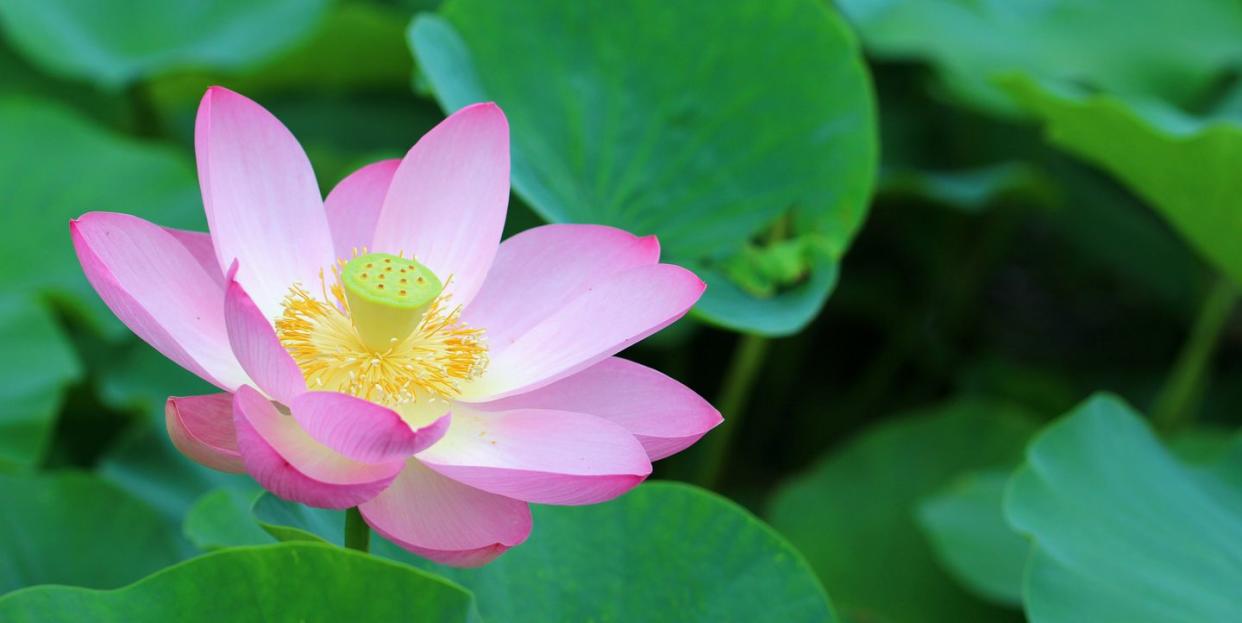
As is often the case with beautiful things, we've given flowers meaning—so much so that even looking at one can make you feel more alive. A plain red rose has become a romantic expression of love and sunny daffodils represent the rebirth of the planet every spring. Of course, because they're plants, we also use them in more practical ways: Silky flower petals have been crushed and distilled into essential oils and perfumes for centuries, and we've figured out how to eat some of them and make tea with select leaves, stalks, and blooms. But to put it simply, the joy of admiring a gorgeous, colorful flower is unmatched. (Though we should note that some are best admired from afar because of toxicity.)
Not to mention, no two flowers are exactly the same. Some rise out of the water to bloom while others sprout vines that go where they want…permanently decorating the side of your house. Even low bushes can produce incredible blossoms, like giant peonies, and if you've ever sat under a cherry blossom tree with a cool breeze blowing tiny petals around you, you know how magnificent flowering trees can be.
A person who loves flowers is called an "anthophile," and if this describes you, you'll probably recognize most—if not all—of the flowers below. Rare or common, bright or soft, simple or complex, these beautiful flowers from around the world are certainly sights to behold.
White Egret Orchid (Habenaria radiata)
File this one under: Flowers that Look Like Other Things. Shaped like a bird with fringed wings and a long curved neck, this breathtaking beauty looks like a tiny white egret flitting around a field. Magical.
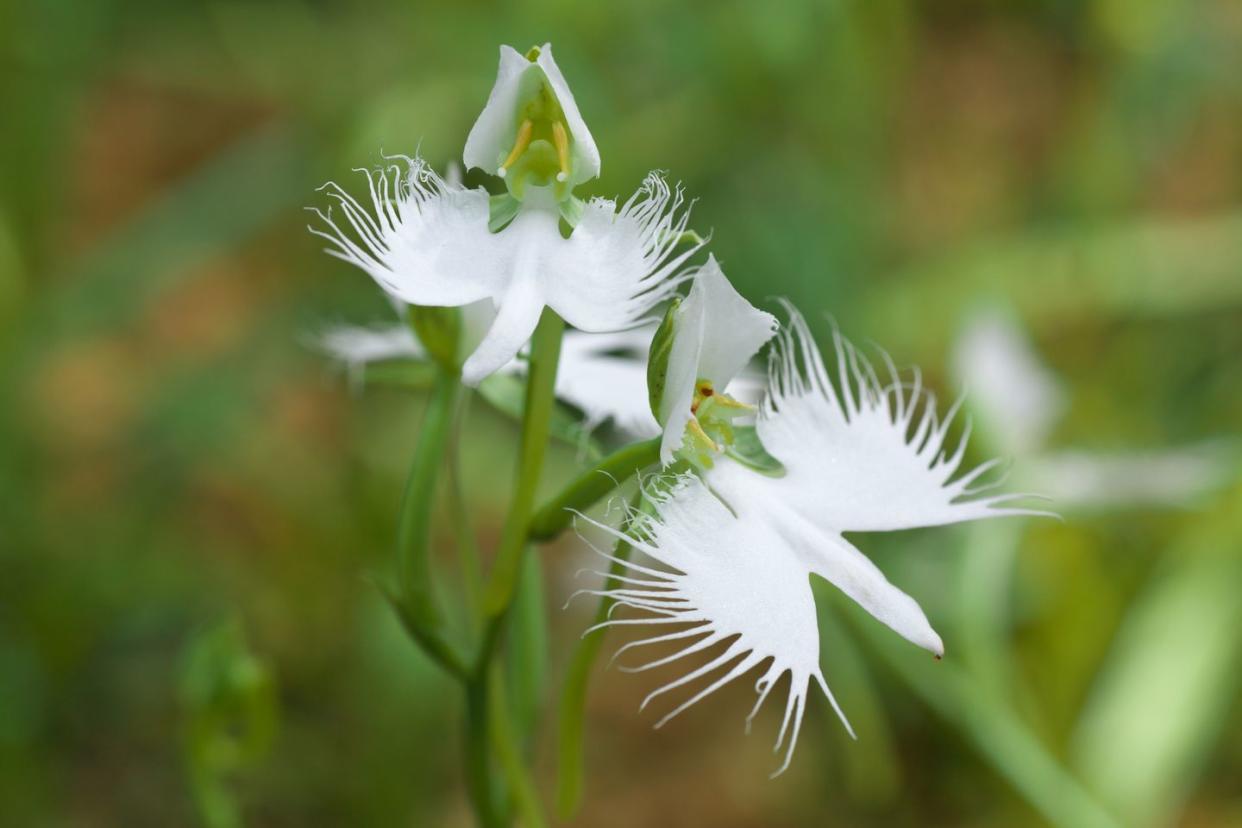
Sacred Lotus (Nelumbo nucifera)
Few flowers are also religious symbols, but the sacred lotus qualifies. It sits just above the water like a peaceful pink boat, while its stalk and roots reach deep into the mud in the dark waters below. If that's not a meaning-of-life story about the balance between struggle and beauty, we don't know what is.
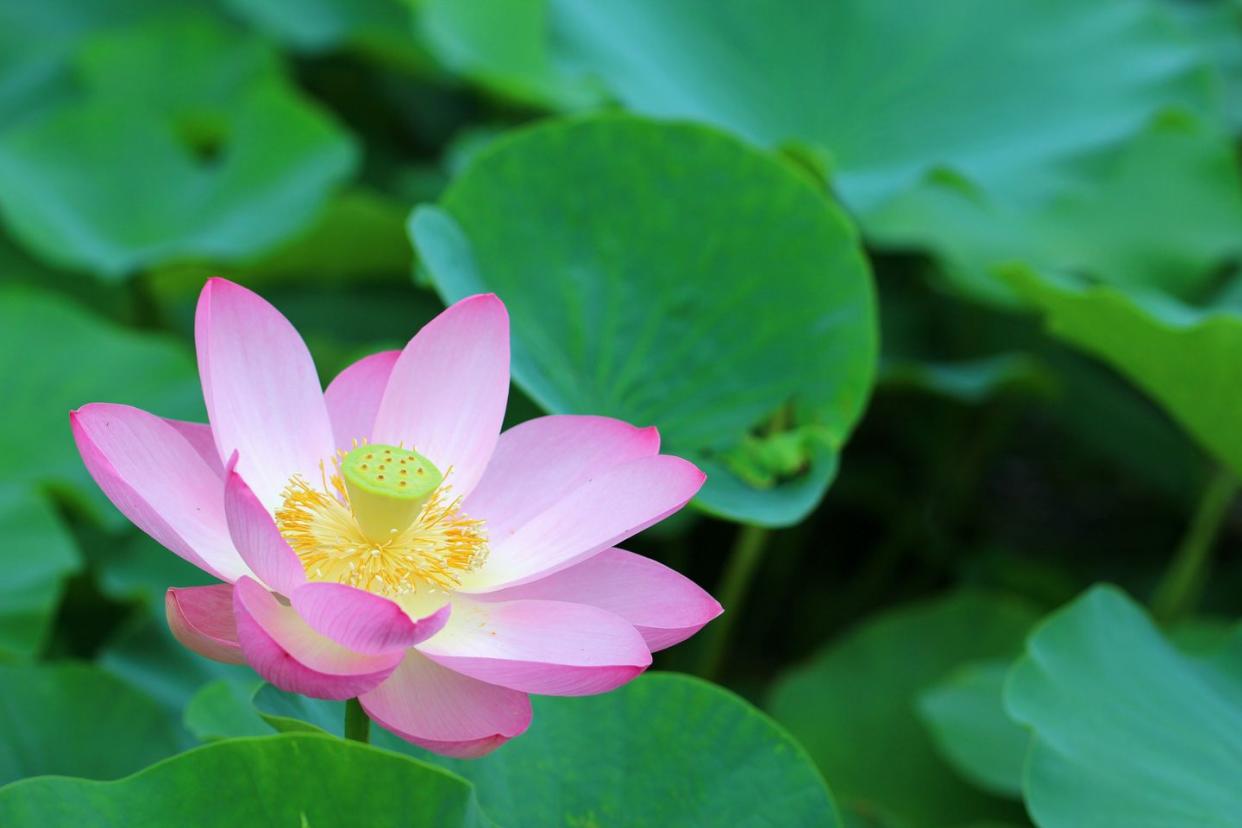
Pompon Dahlia (Dahlia variabilis pompon)
Blossoms in every color imaginable make dahlia flowers a gardener's favorite. On this pom-pom-shaped variety, look at how each petal is shaped and placed so uniformly in a near-perfect sphere. It's so satisfyingly organized, and—if you can say this about a flower—tidy. They're also mini (only two inches across), which automatically makes them adorable.
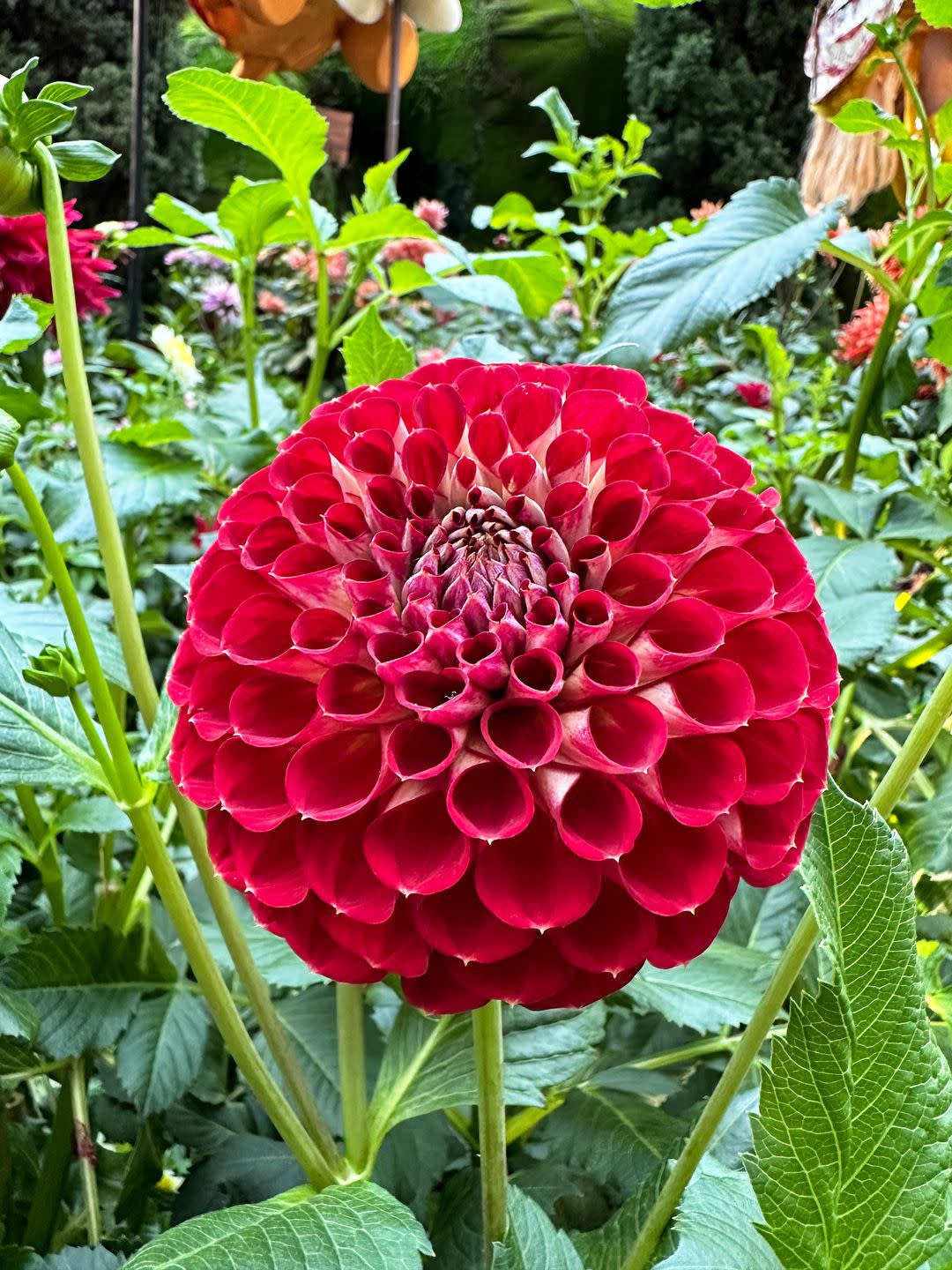
Calla Lily (Zantedeschia)
If you want your flowers to come with a mythological pedigree, the calla lily is said to come from the breast milk of none other than the Greek goddess Hera, wife of Zeus. Back on earth, we celebrate them for their simple beauty and the way a single petal spirals elegantly around its spadix.
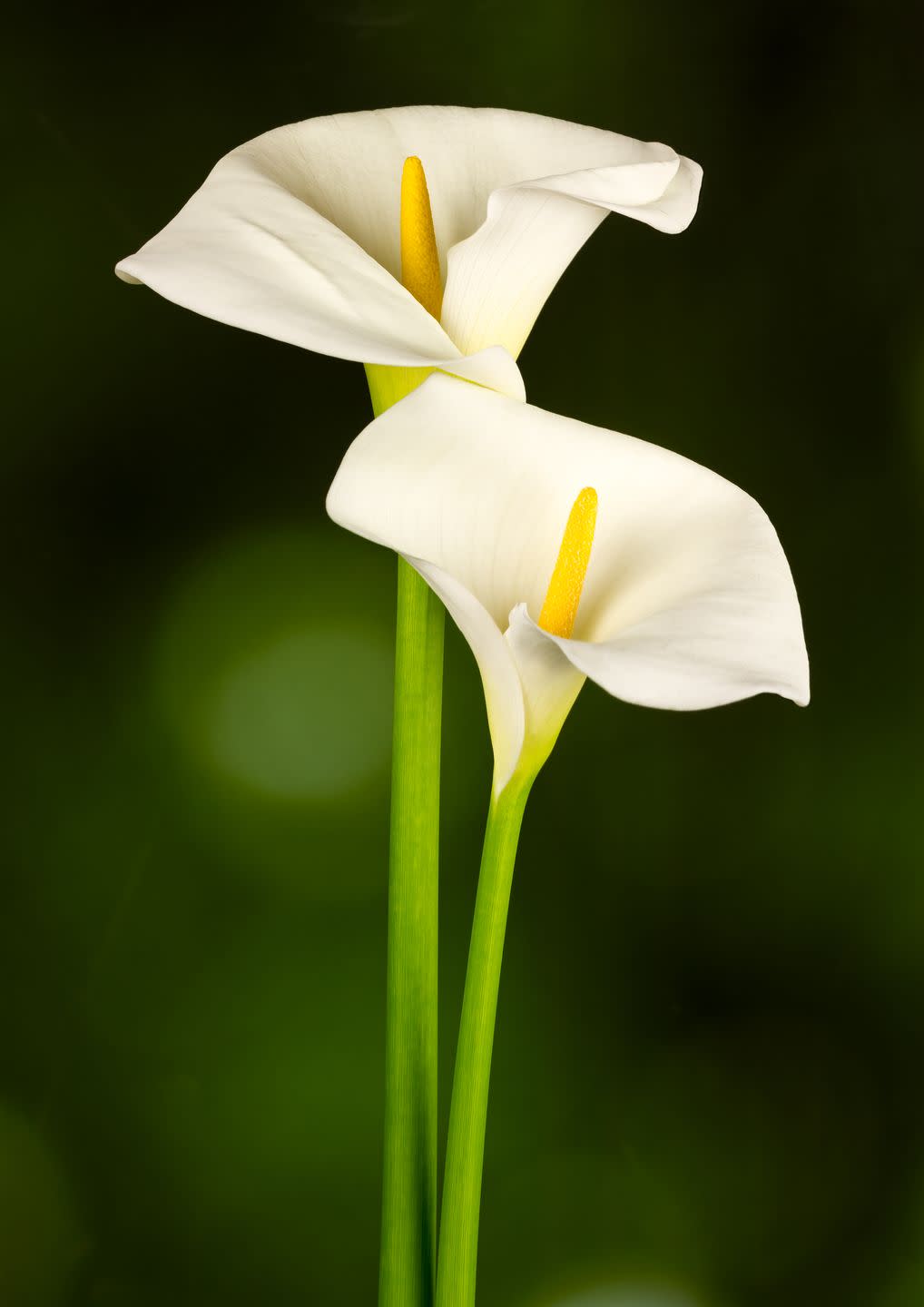
Sweet Juliet Rose (Rosa ausleap)
Costing 15 years and $3 million, the Sweet Juliet was created by David Austin to feature maxed-out petals and smell like a sweet tea. When he debuted the rose, people fell wildly in love. He sold it for $5 million, making this apricot sweetie the most expensive flower in the world.
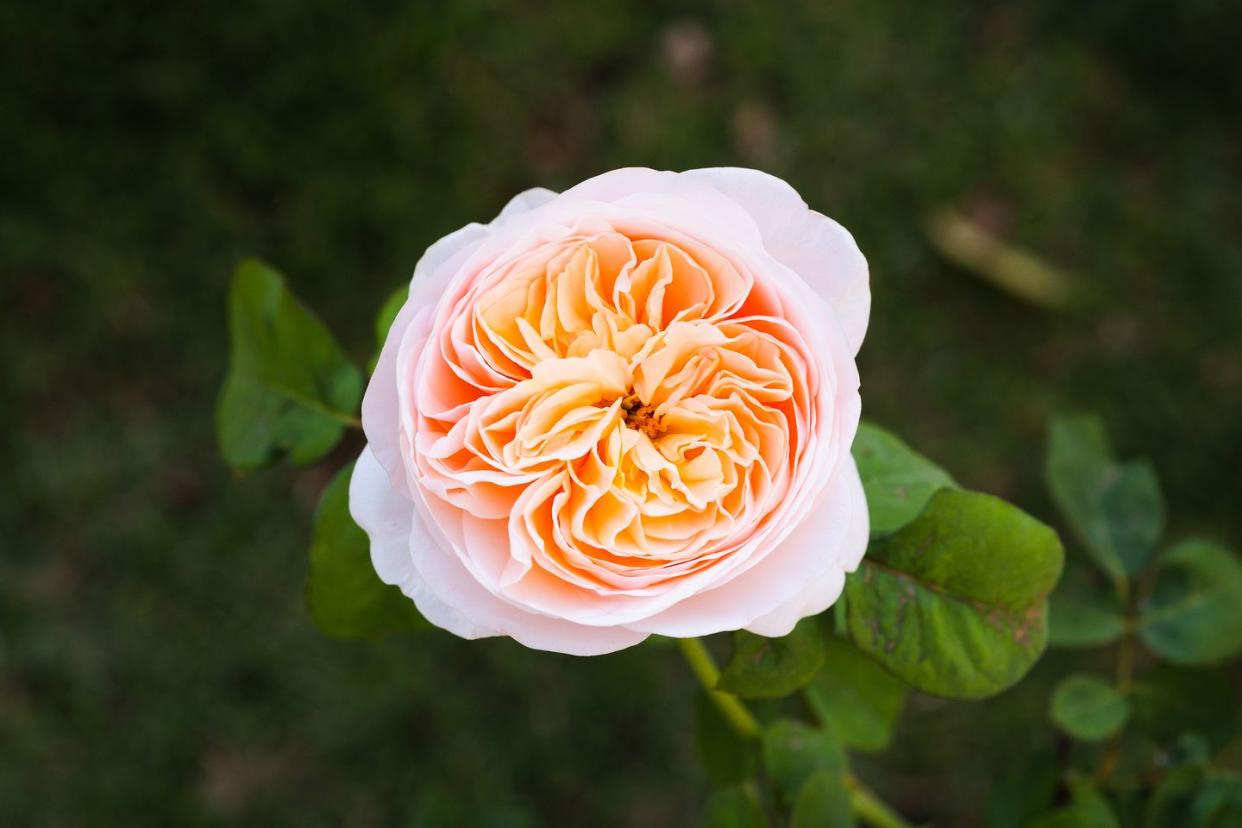
Lavender (Lavandula lavandin)
Tiny lavender flowers smell amazing, and when you see millions of them in a field—say, in Provence, France—the effect is absolutely sublime. Fortunately, lavender bushes are just as easy to grow in a sunny spot in your yard, and you can harvest the flowers to make things like essential oils and body scrubs.
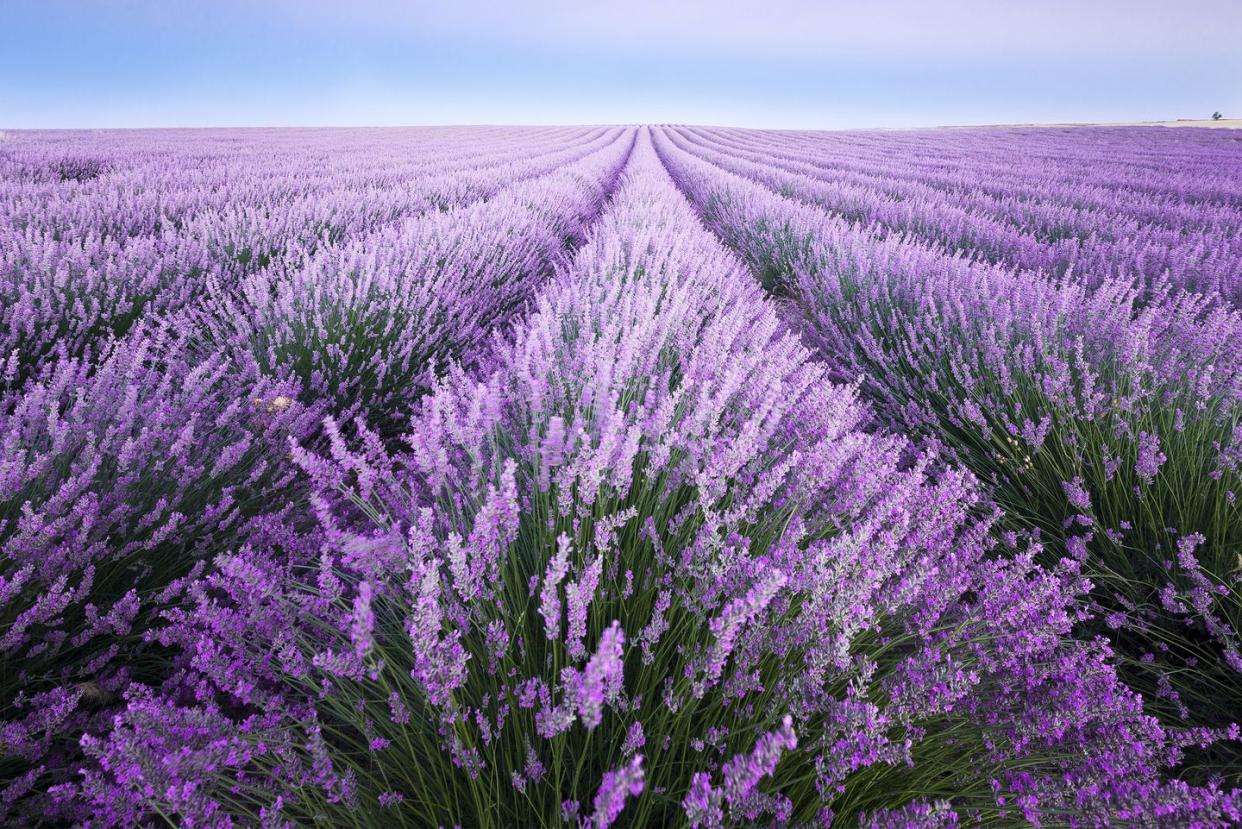
Teddy Bear Sunflower (Helianthus annuus)
Whoever named this flower got it 100 percent right. It's not often you look at a flower and think "cozy," but the teddy bear sunflower is begging for a cuddle. Perhaps Vincent Van Gogh thought so too, because this varietal features prominently in his masterpiece.
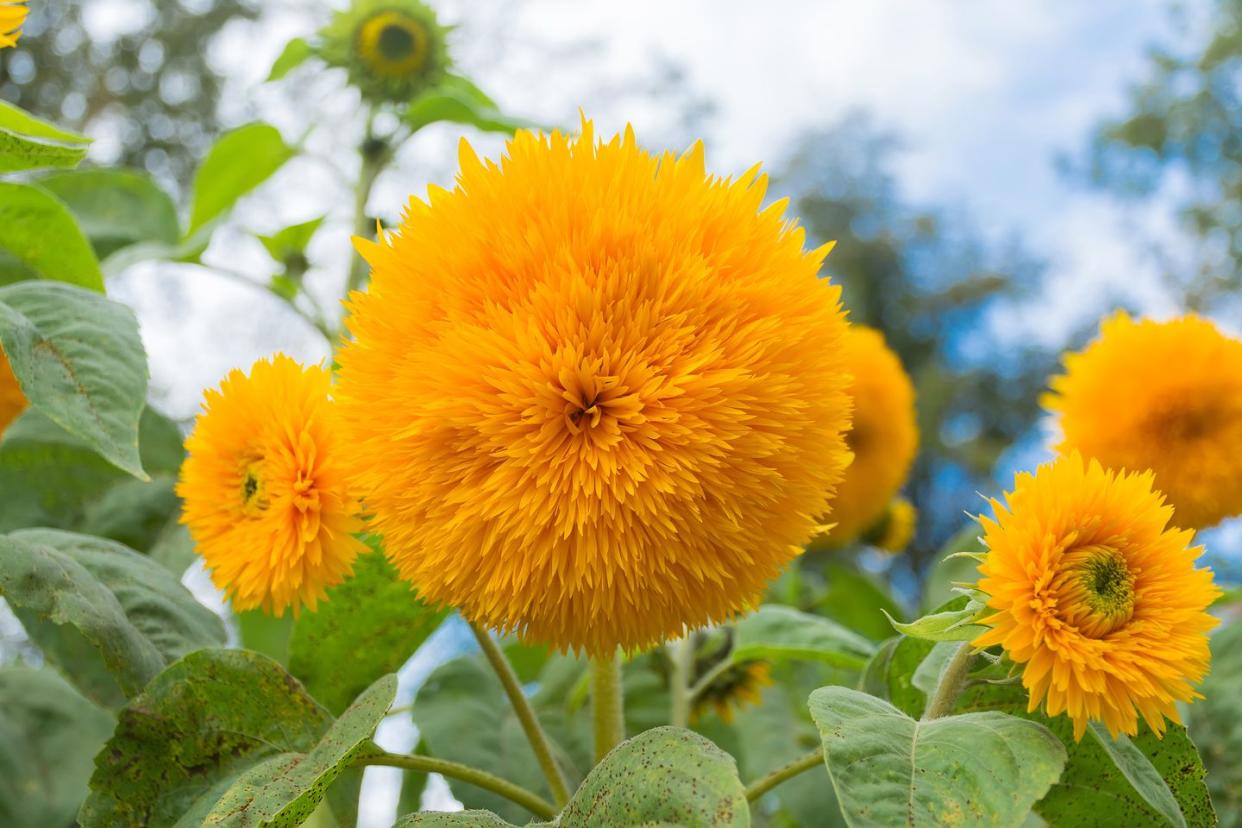
White Batflower (Tacca integrifolia)
The tropical white batflower is a sight to behold, but you'll have to stay up late to see it. Once the stalk rises about three feet above its huge leaves, it blooms at night, throwing out those wild tendrils and opening its white and dark purple petals. It looks a little like a bat, but the flower gets its name because bats are its pollinators.
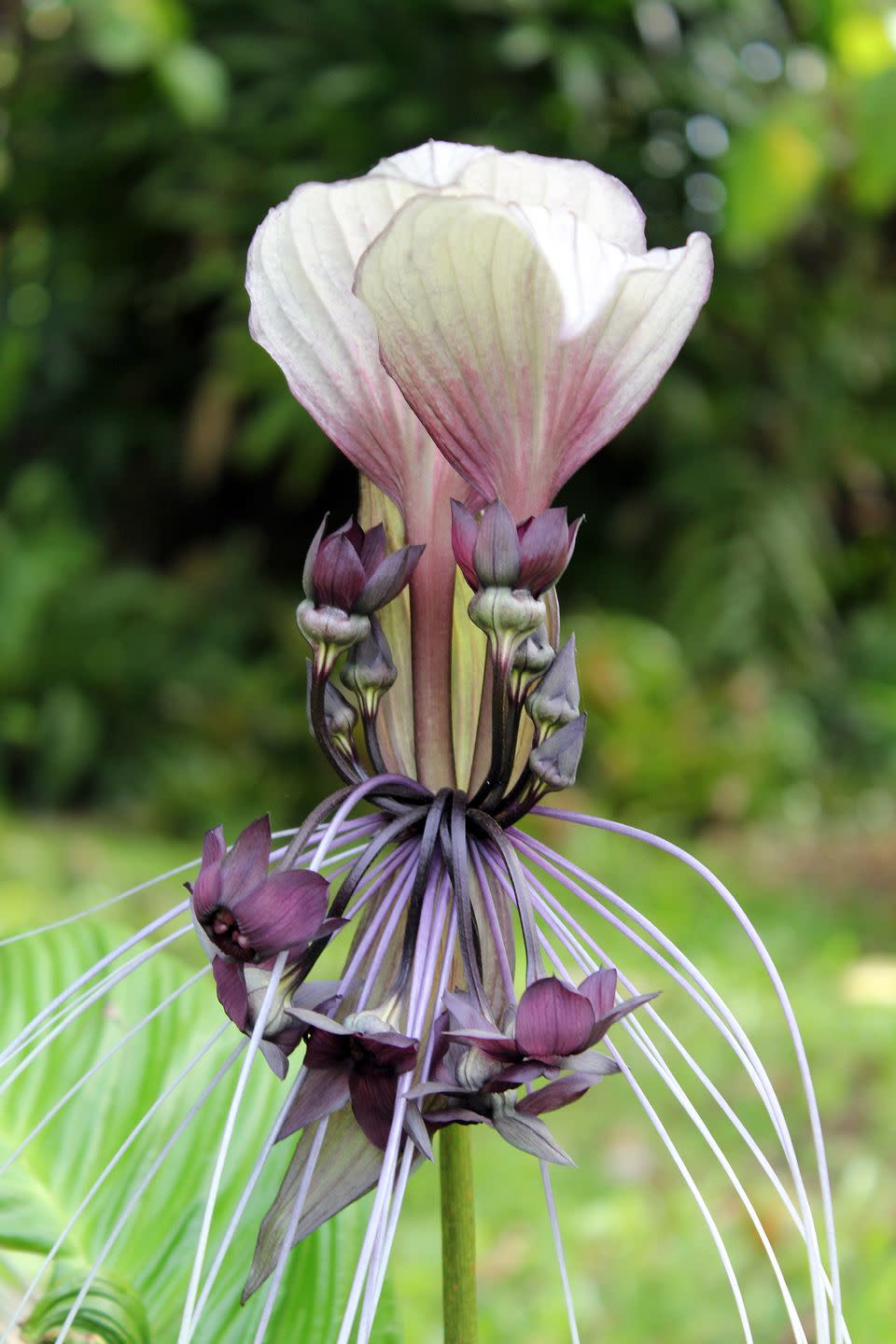
Frangipani (Plumeria rubra)
When someone gives you the gift of a lei in Hawaii, it's most likely strung with fragrant frangipani flowers. They come in many colors, but this marshmallow white with a spritz of bright yellow is floral minimalism at its finest. Funny story: Frangipani is the name of a fake botanist dreamed up by 19th-century London perfume titans to sell their latest product.
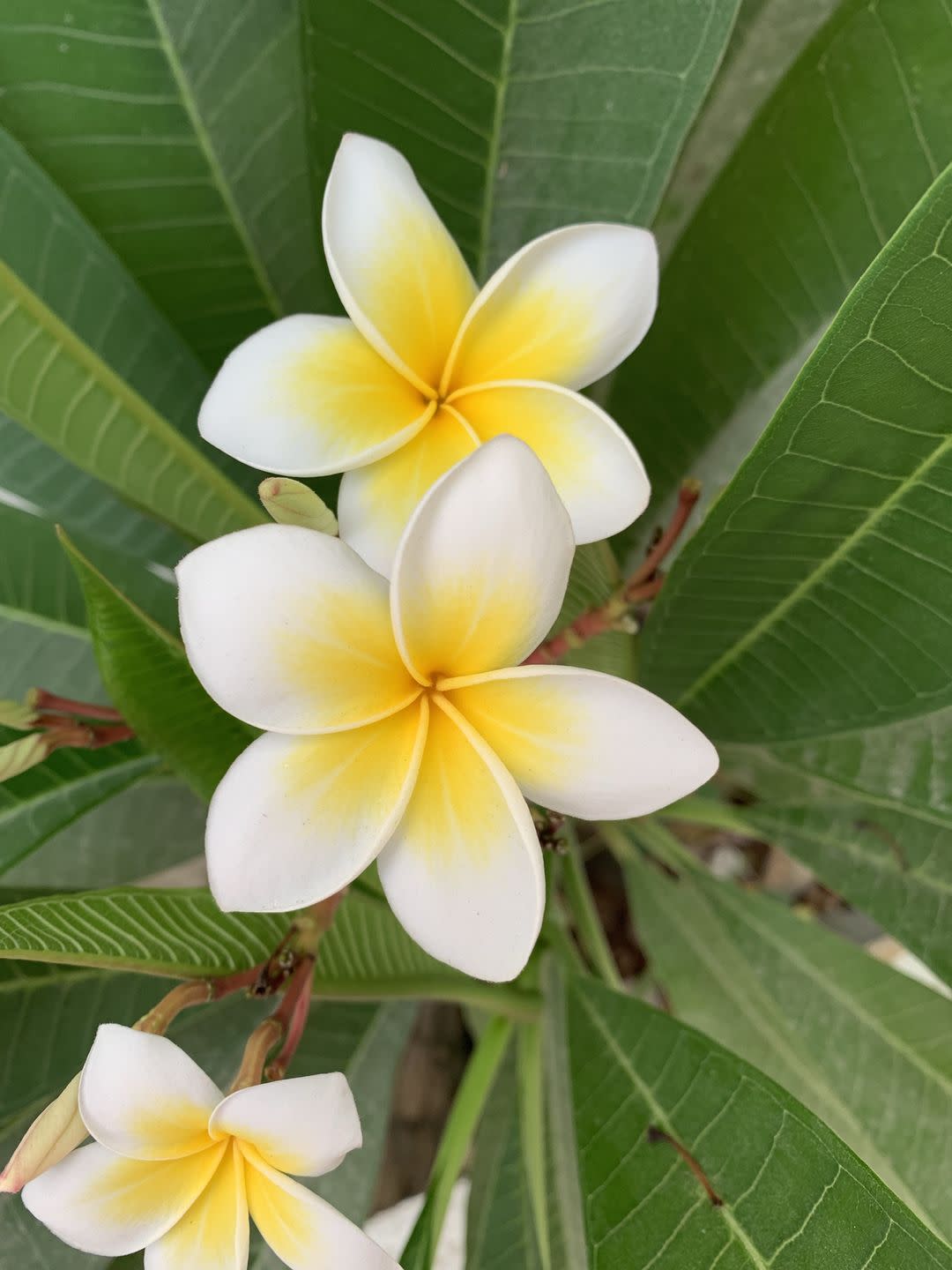
Middlemist's Red (Camellia japonica)
No list of beautiful flowers is complete without a mention of the rarest flower on earth. This small, red camellia may look simple, but only two original live plants of its kind exist—one in New Zealand and one in the UK.
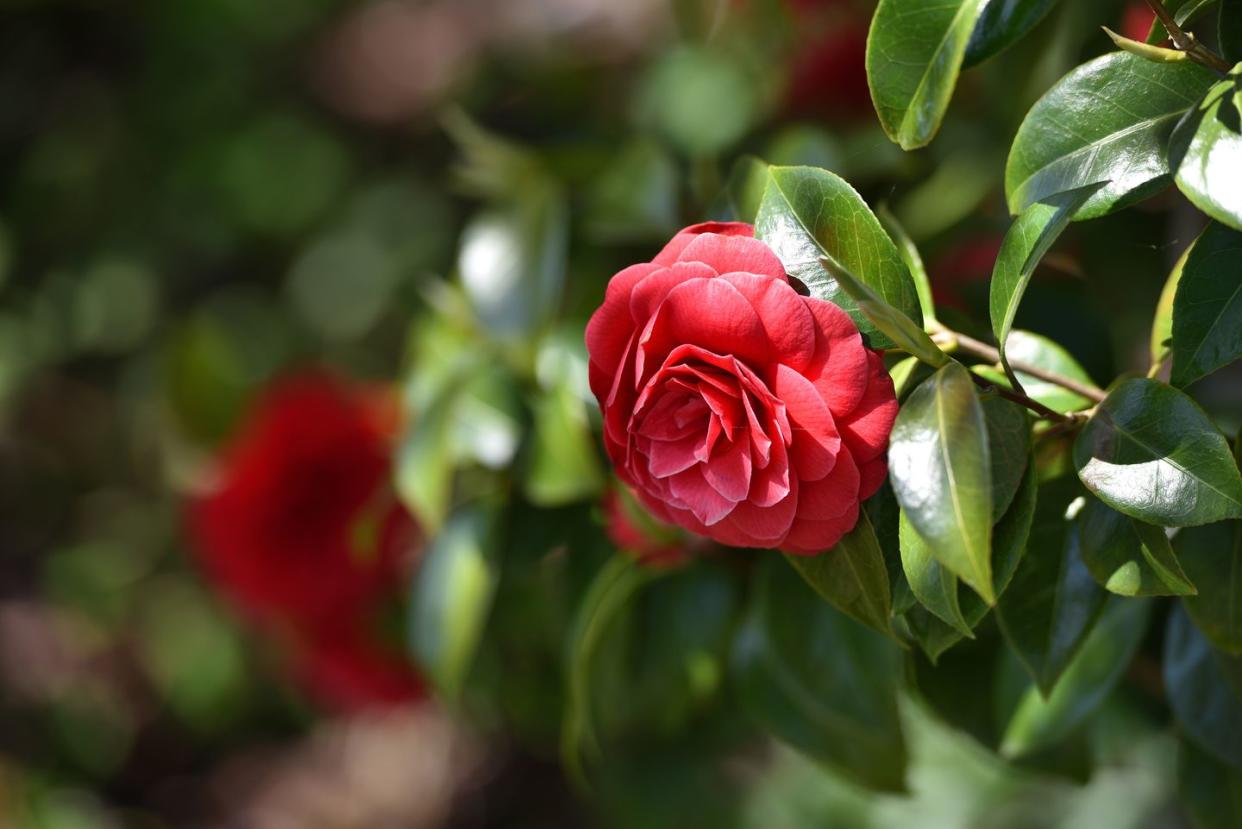
Delphinium (Delphinium elatum)
We didn't spot any at King Charles III's coronation, but we're pretty sure one of his many homes features this tall delphinium. After all, it's his favorite flower. If you're going to grow it in your own garden, be careful: Every part of the plant is toxic to humans and animals.
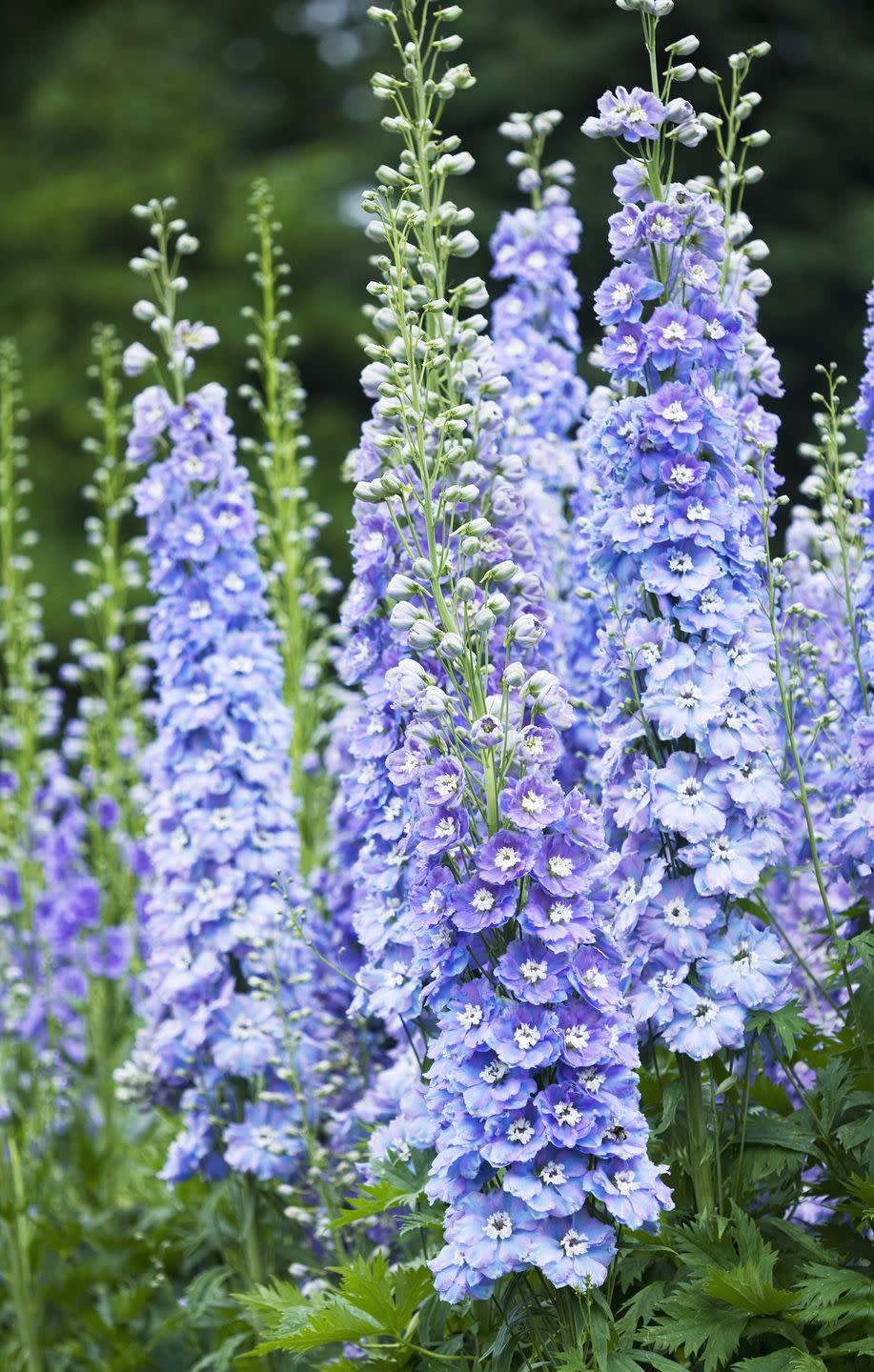
Fuchsia (Fuchsia magellanica)
Fuchsia can grow as shrubs or small trees or on vines, producing pink and purple flowers so bright they almost look cartoonish. What's really cool is that the flower wasn't named after the color; the color was actually named after the flower.
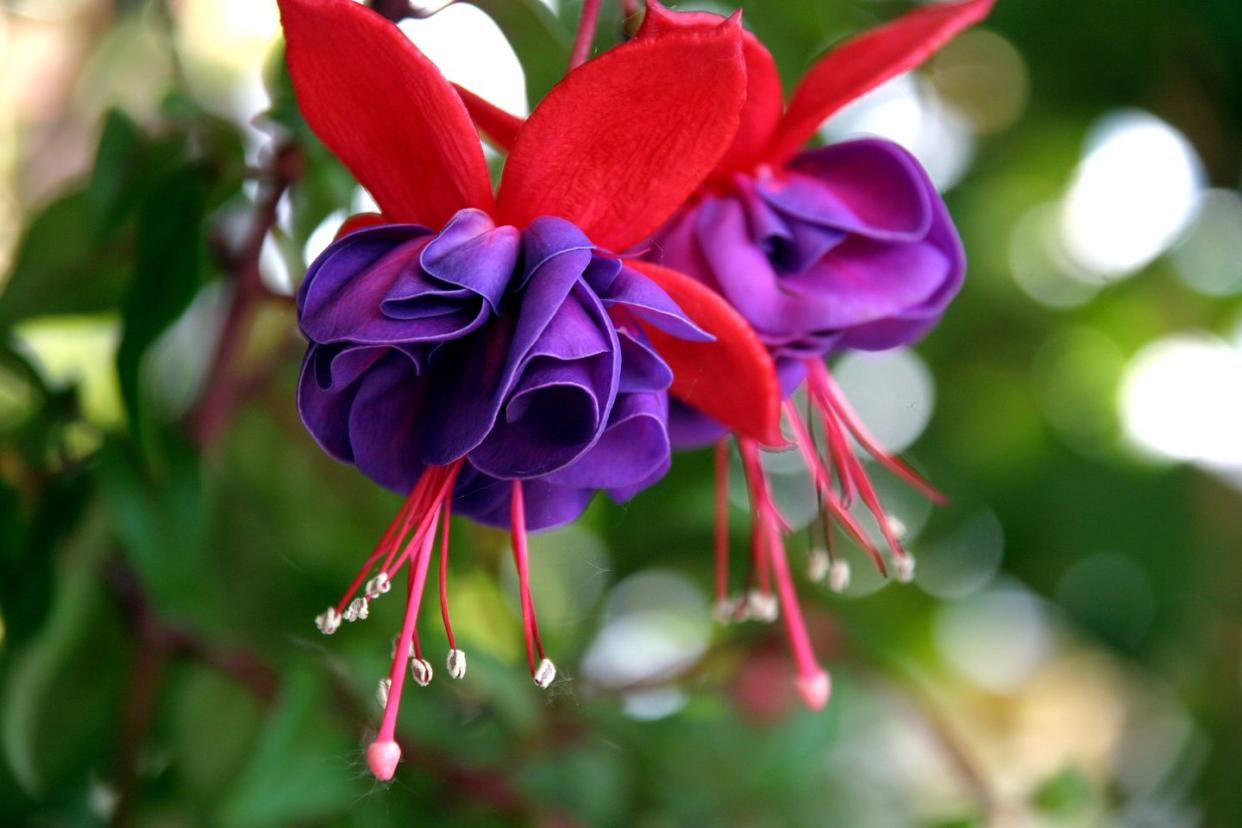
Eucalyptus Gum Tree Flowers (Corymbia ficifolia)
Most of us know eucalyptus for the fragrant blue-silver leaves that we use for decoration, but the eucalyptus gum tree offers a completely different surprise. It produces Ping-Pong-ball-size seed pods, which are themselves often used in flower arrangements. We recommend patience because when they bloom, you'll get one of these dusty rose, sea-anemone-looking flowers per stem, and they cover the whole tree. It’s magnificent.
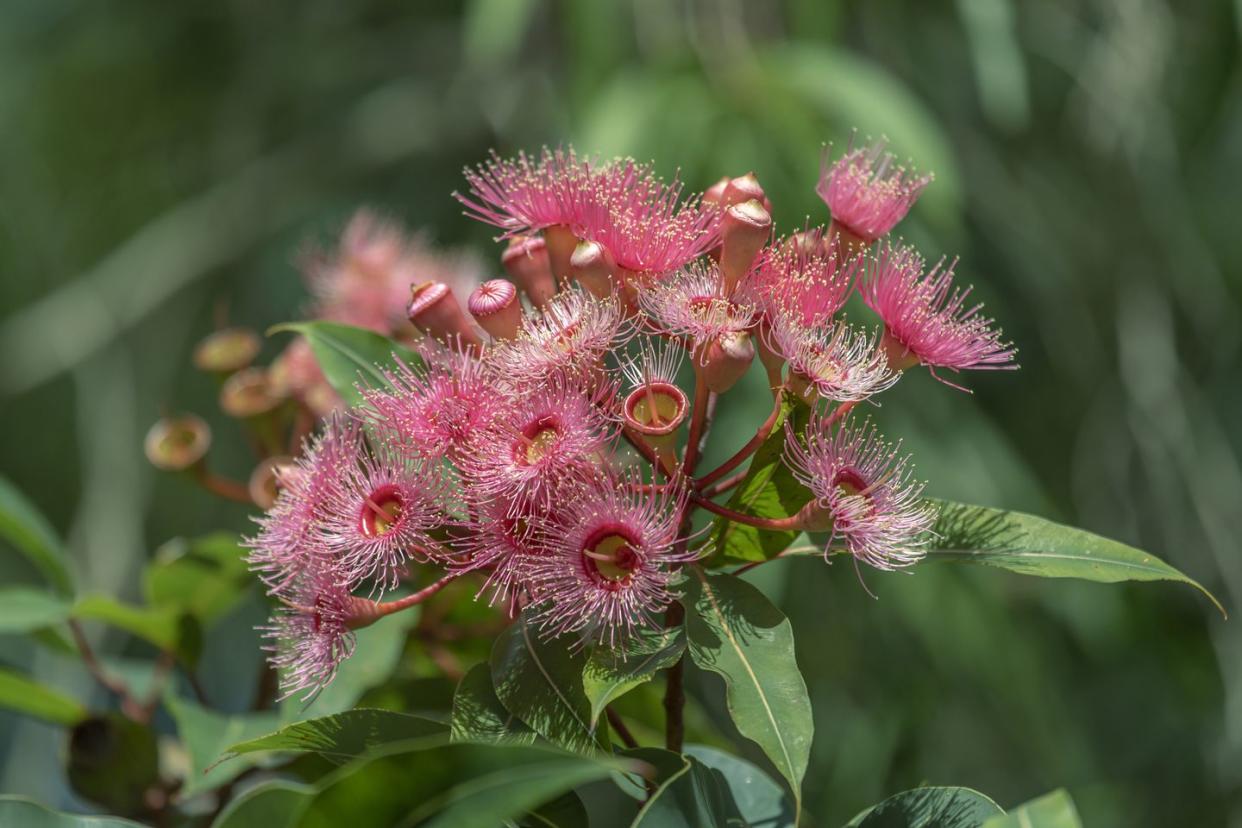
Bird of Paradise (Strelitzia reginae)
A patch of flowers that looks like a curious flock of birds is exactly the level of whimsy we love to see in a garden. This tropical beauty is so colorful, it's easy to see why people keep planting it. Although it's not a rare flower, it's actually quite unique because only five varieties of it exist in the world.
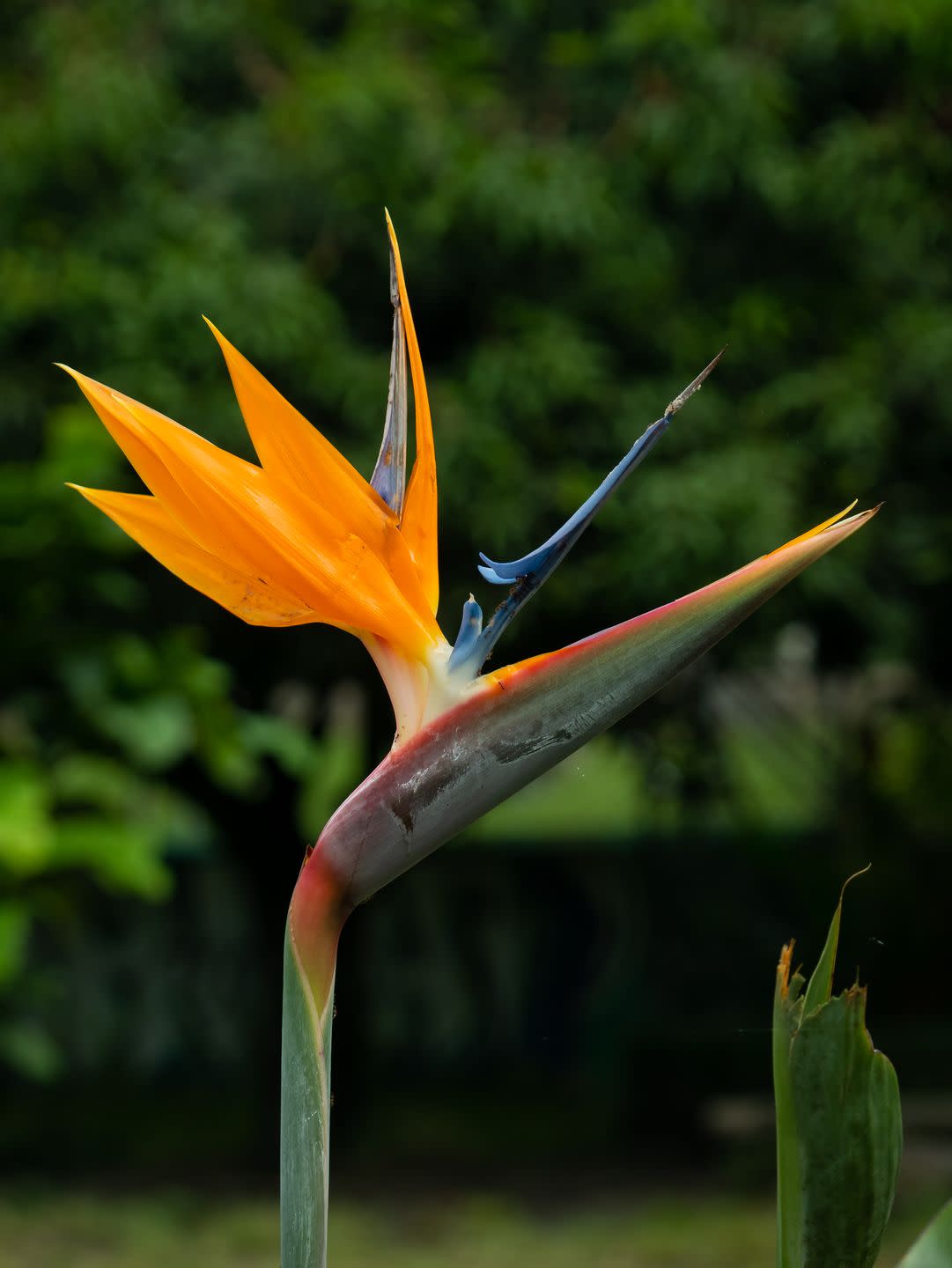
Saffron Crocus (Crocus sativus)
This watercolor-like crocus is gorgeous, but that's not the main reason people are obsessed with it. It's the three auburn stigma that grow from the center and are harvested to make saffron spice that make it so covetable. The stigma are so fragile that they can only be harvested by hand, which is why saffron is one of the most expensive spices per ounce.

Mr. Lincoln Rose (Rosa "Mr. Lincoln")
If someone tells you to close your eyes and picture a rose, a deep red version like this one (with that strong perfume we all hope for when we stick our nose in a flower) is probably what comes to mind. And yes, it's named after President Abraham Lincoln.
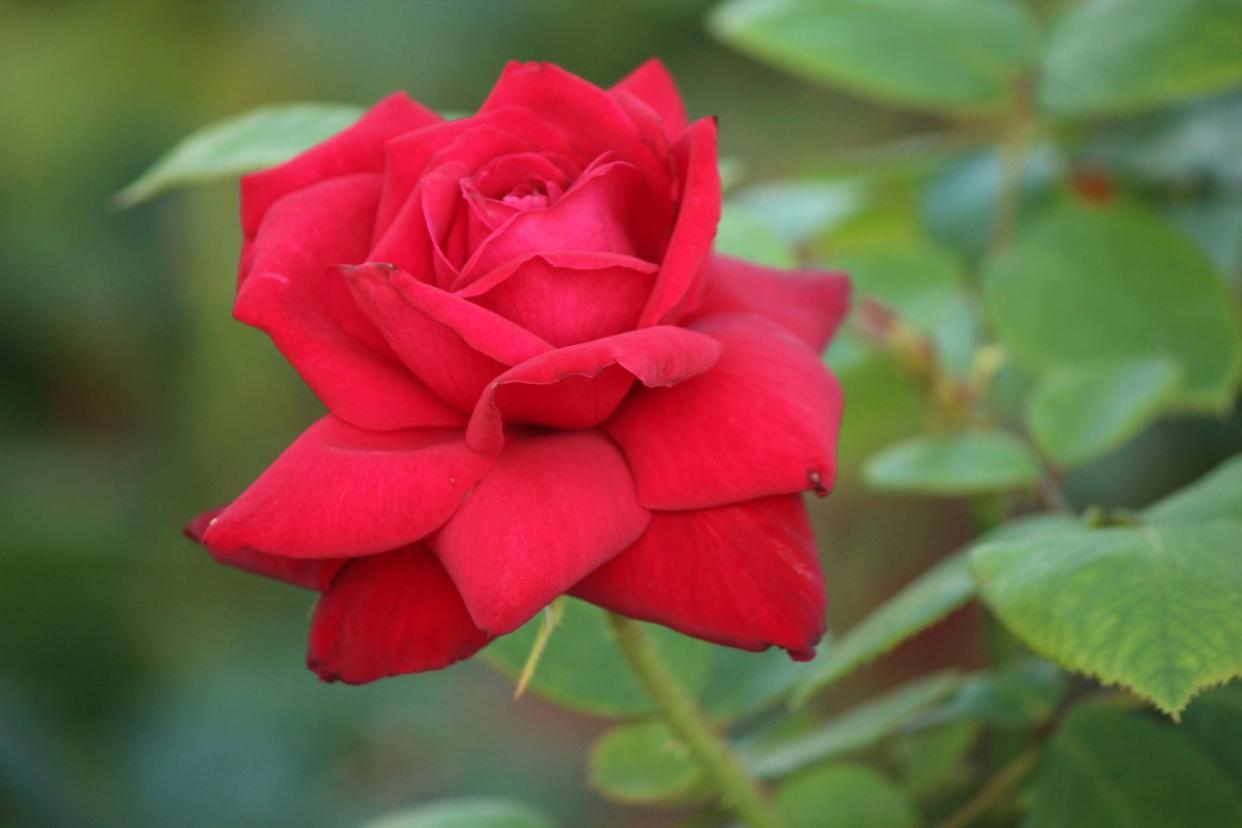
Double Ellen Green Lenten Rose (Helleborus x hybridus)
You might think green leaves with green flowers sound redundant until you see this frilly chartreuse beauty. It grows well in pots, returns every year, and is a wonderful way to bring some lime green in your life. It is a toxic plant, though—don't touch.
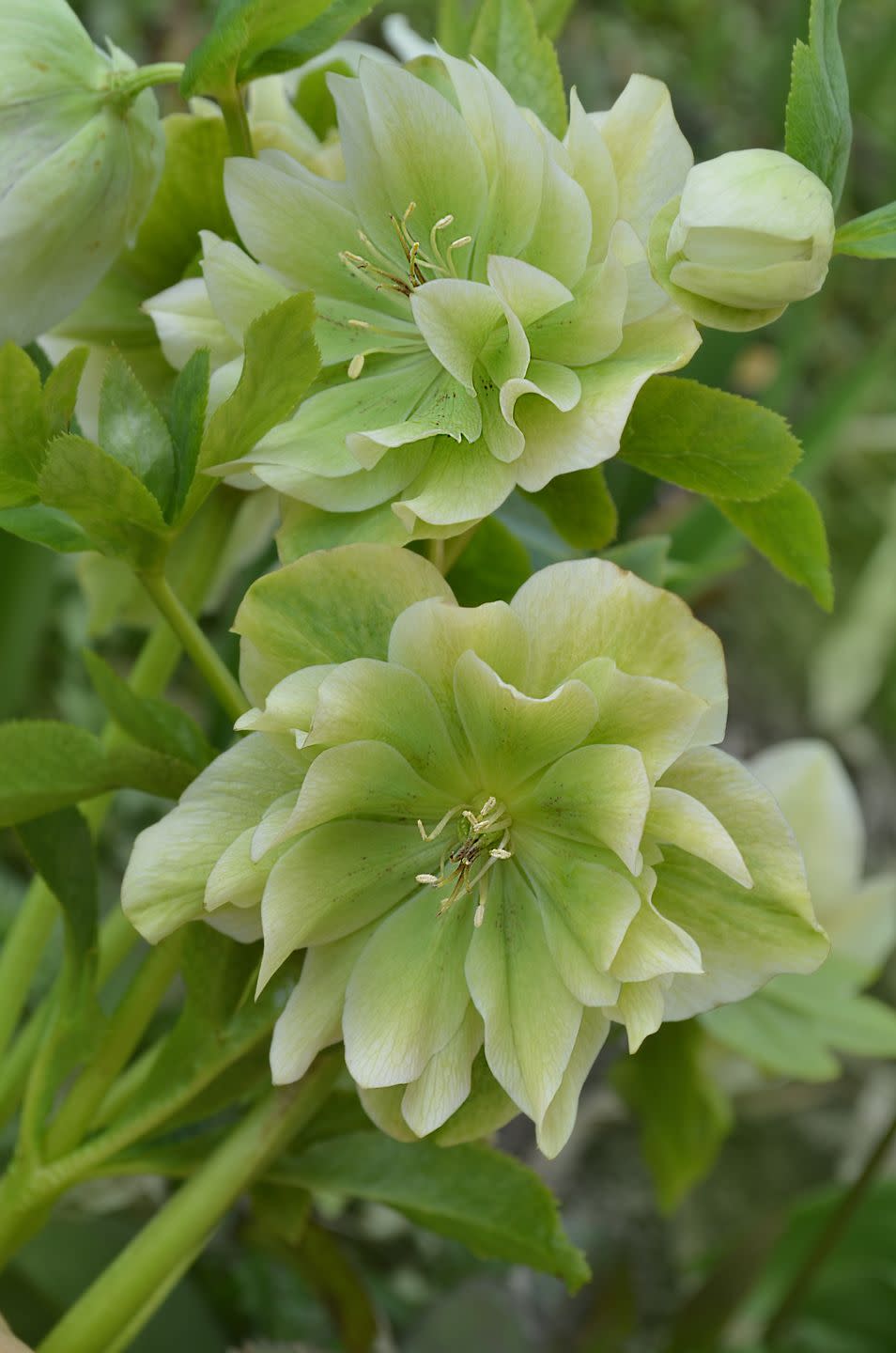
Parrot Tulip (Tulipa gesneriana var. dracontia)
People love traditional tulips for their tall stalks, clean lines, and bright monochrome flowers, but it would be careless if we didn't call out the untraditional parrot tulip with its frilly edges and bold marbling. While a trip to Holland's tulip fields remains a dream-come-true scenario, we'll have to make do with the bulbs growing in our own yard.
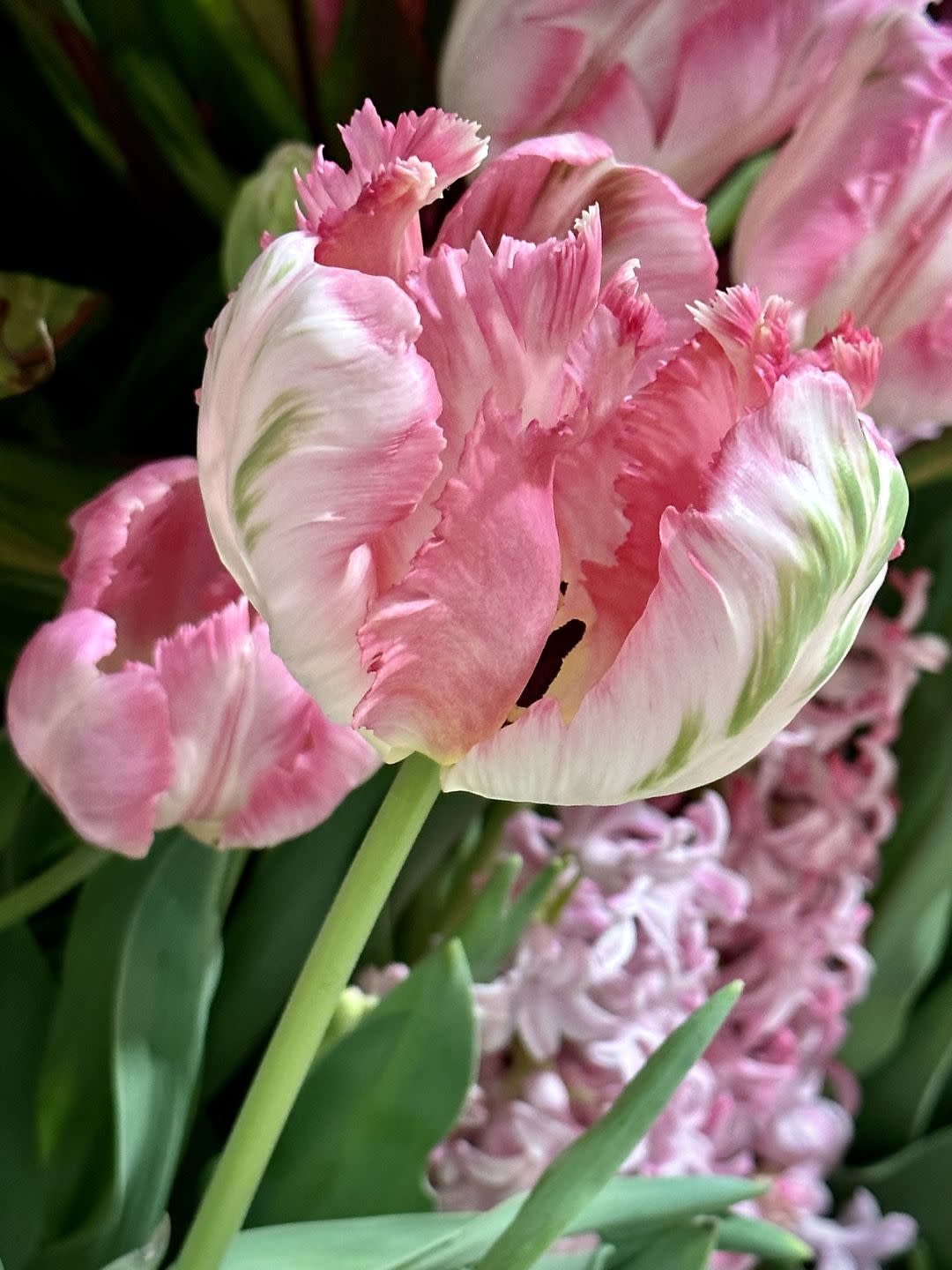
Bearded Iris (Iris × germanica)
An iris is a wild and ancient flower, complete with mythological backstories and rich symbolism, and it's only in the past 200 years that Americans have been growing it in their gardens. With three-foot stems and flower petals that fold down to reveal different colored petals inside, it's no wonder it's irresistible to gardeners.
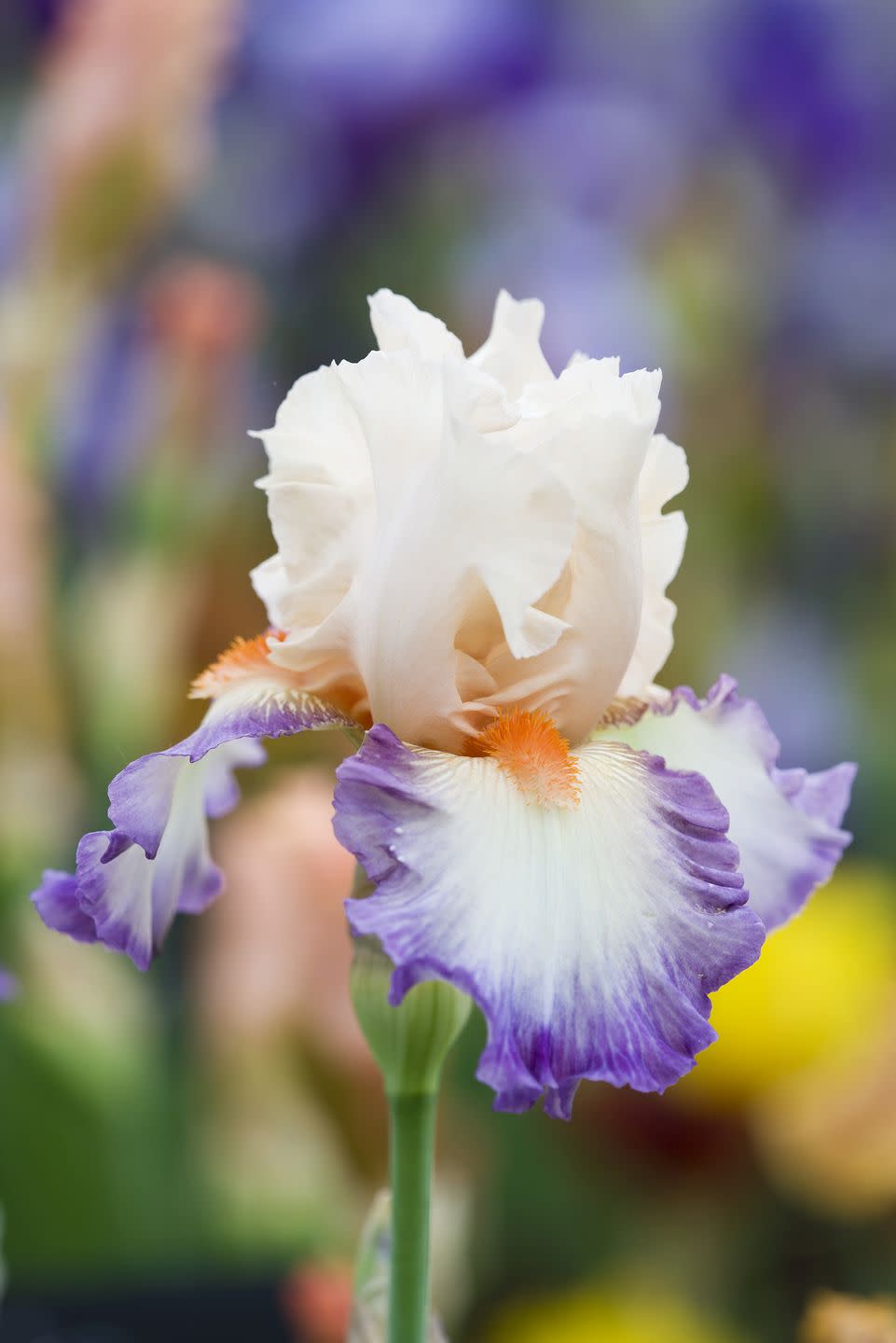
Passionflower (Passiflora incarnata)
A passionflower tends to appear as if it's inside out. All the parts are on display, pointing every which way, and they're all different colors. Even the vine it grows on is beautiful—full of cute, curling tendrils that hold on tight as it grows as tall as 30 feet. It's such a joy to have around.
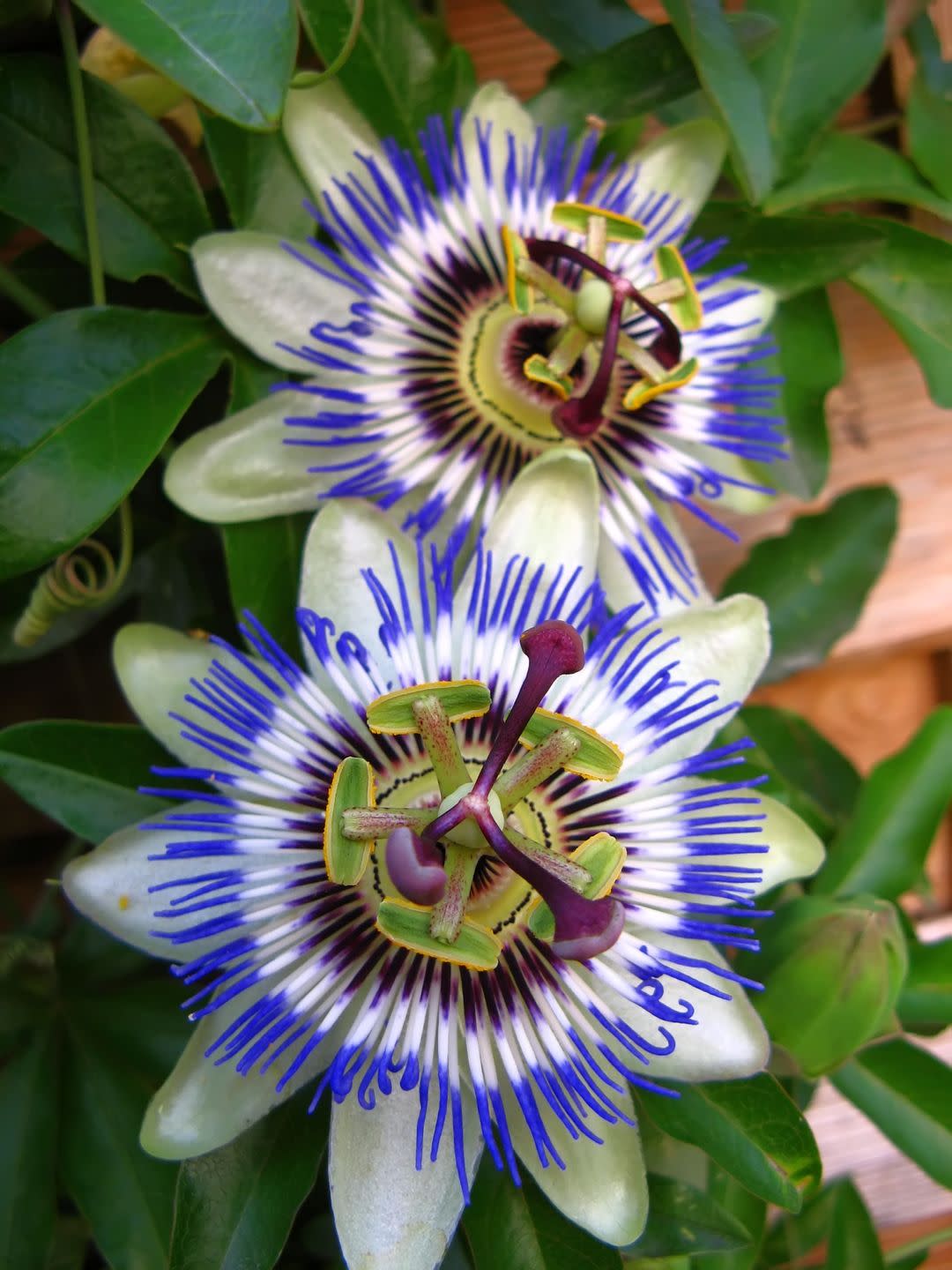
Lilac (Syringa vulgaris)
Of all the photos here, this is the one you wish were scratch-n-sniff. This beauty smells like a mix between fresh laundry and your favorite candy store. Interestingly, only purple lilacs give off this fragrance. Although the white ones may have a slight scent, they're often unscented—but they're just as gorgeous as their purple relatives.
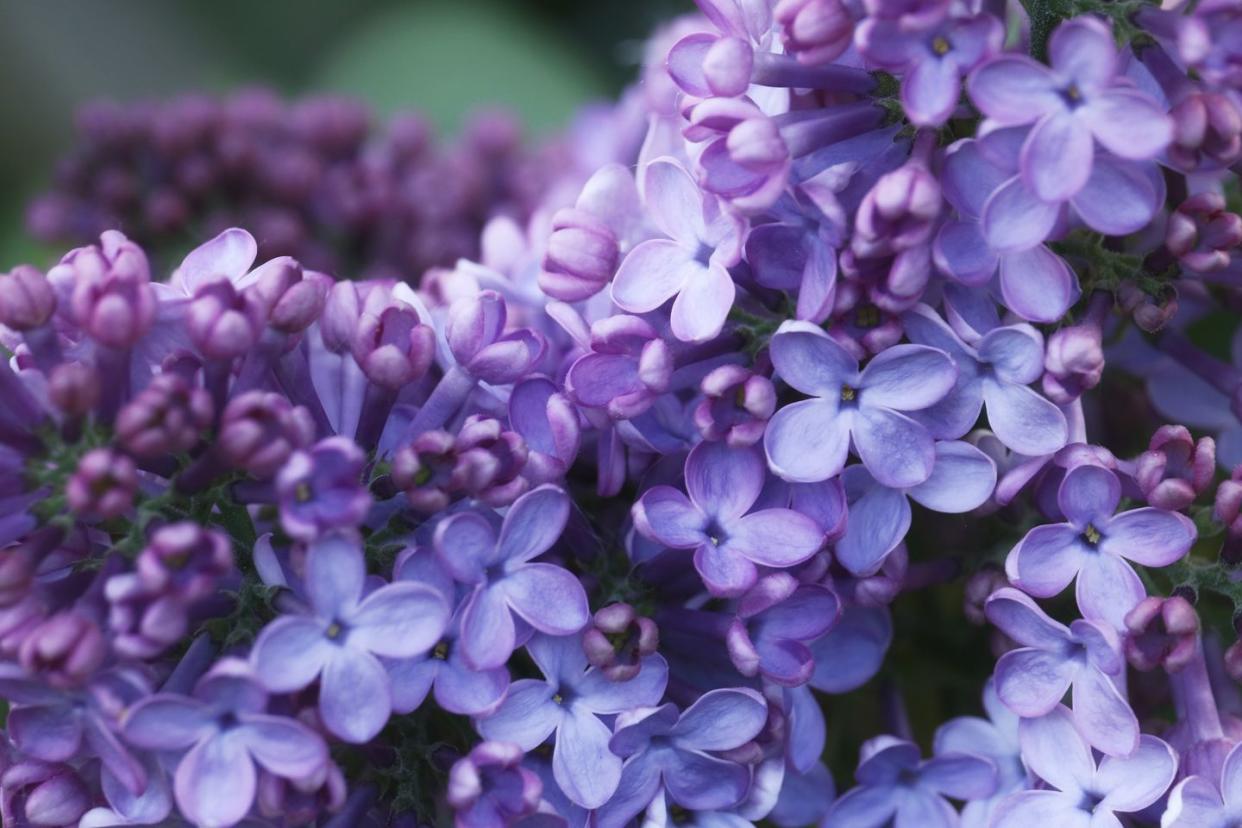
Blushing Bride Protea (Serruria florida)
Native to South Africa (not Florida), protea grows on a strong stalk with a cluster of blossoms at the top. In fact, it looks so much like a ready-made mini bouquet, that's where the flower gets its name. Mostly cream with just a whisper of lime and coral, a blushing bride is both a neutral and unique favorite.
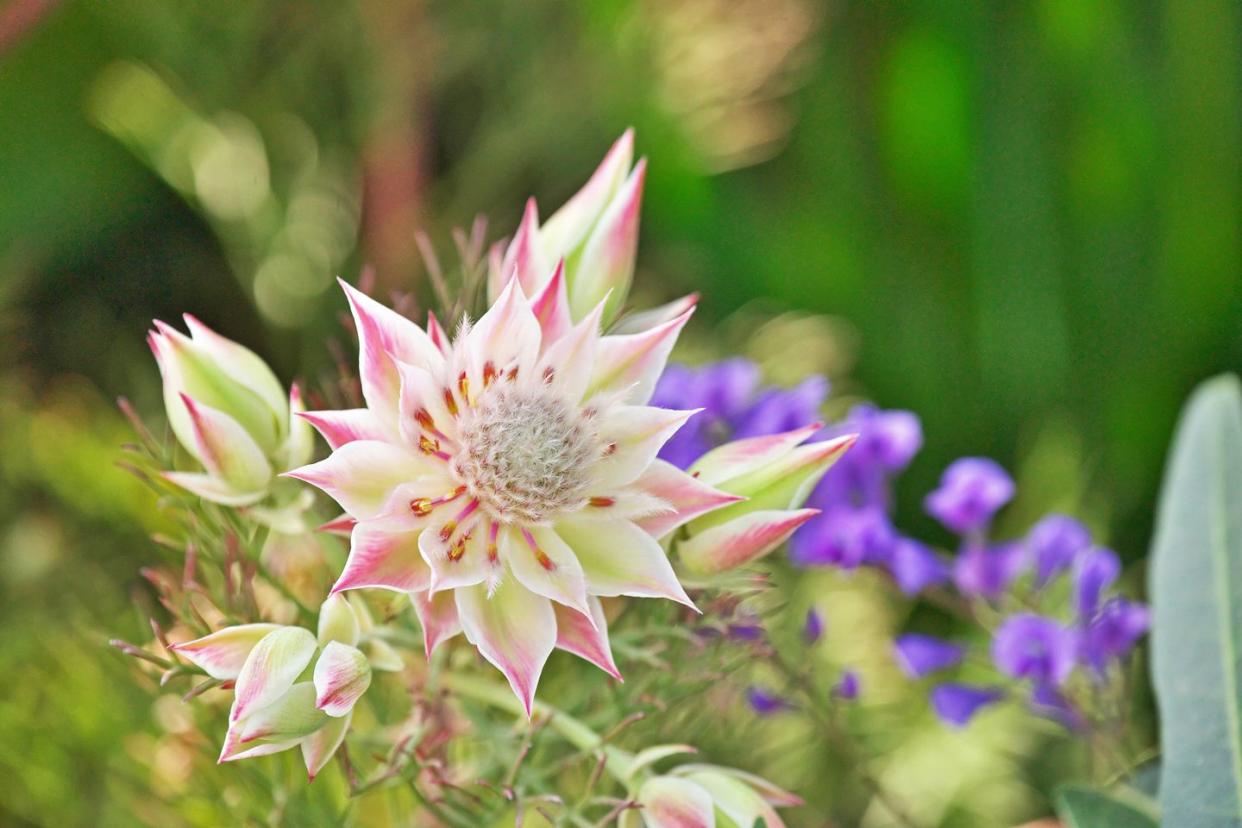
Cherry Blossom (Prunus serrulata)
Every spring, people stand in wonder under cherry blossom trees (also known as Japanese cherry or sakura), taking countless pictures and in awe of how something can be so big and so fragile at the same time. Although the cherry blossom tree can be found all over the world, it's Japan's national tree—and the first ones to be planted in Washington, D.C., were gifts from Japan.
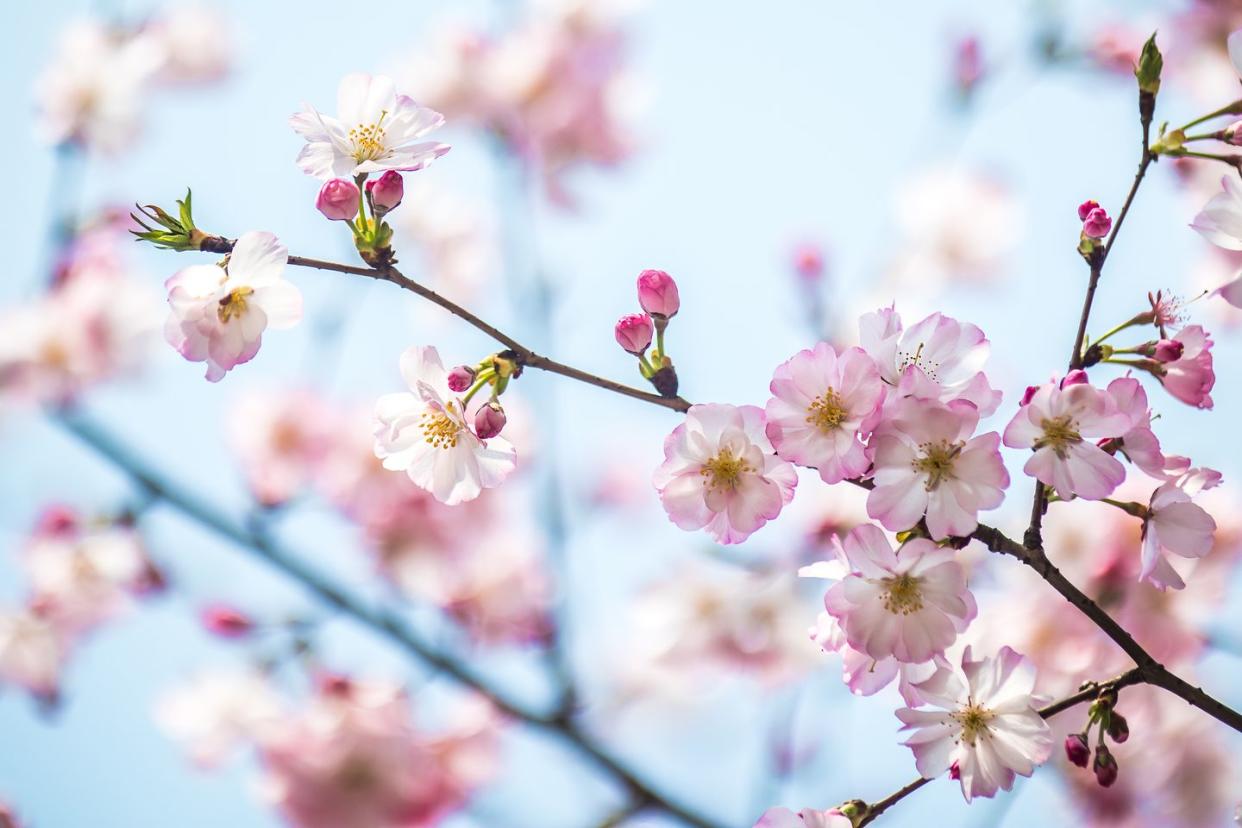
Flame Lily (Gloriosa superba)
It's difficult to decide what's most fascinating about this lily. Maybe it's the way it projects itself away from its leaves, hovering in the air like a drone, or how it looks like an artistic fireball coming in for a landing. Either way, there's no denying that the flame lily is both "gloriosa" and "superba."
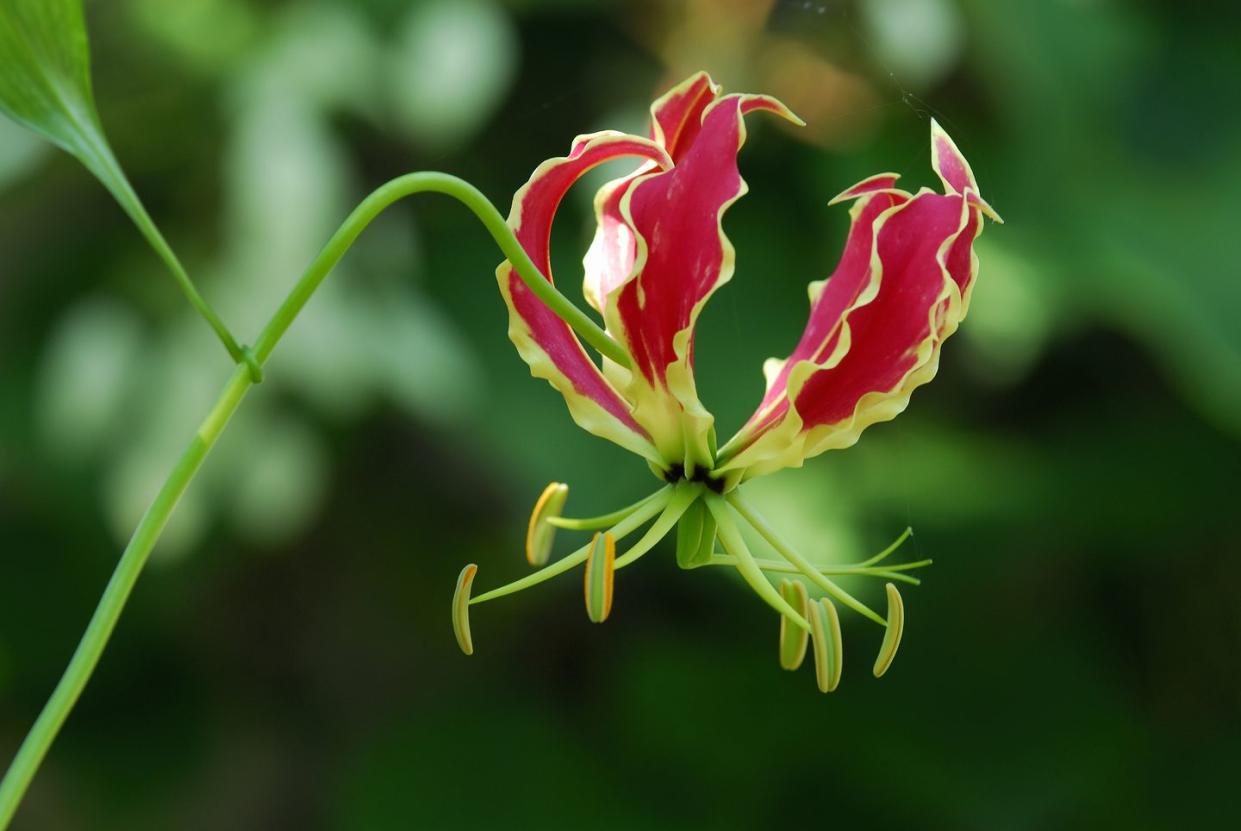
Mimosa Silk Tree (Albizia julibrissin)
Also known as a Persian silk tree, this flowering tree is usually wider than it is tall. When it blooms, you get the most delightful pink and white poof balls you ever did see. Sadly, because its seed pods can survive in practically any weather conditions, the tree is considered invasive—nevertheless, it's undeniably beautiful.
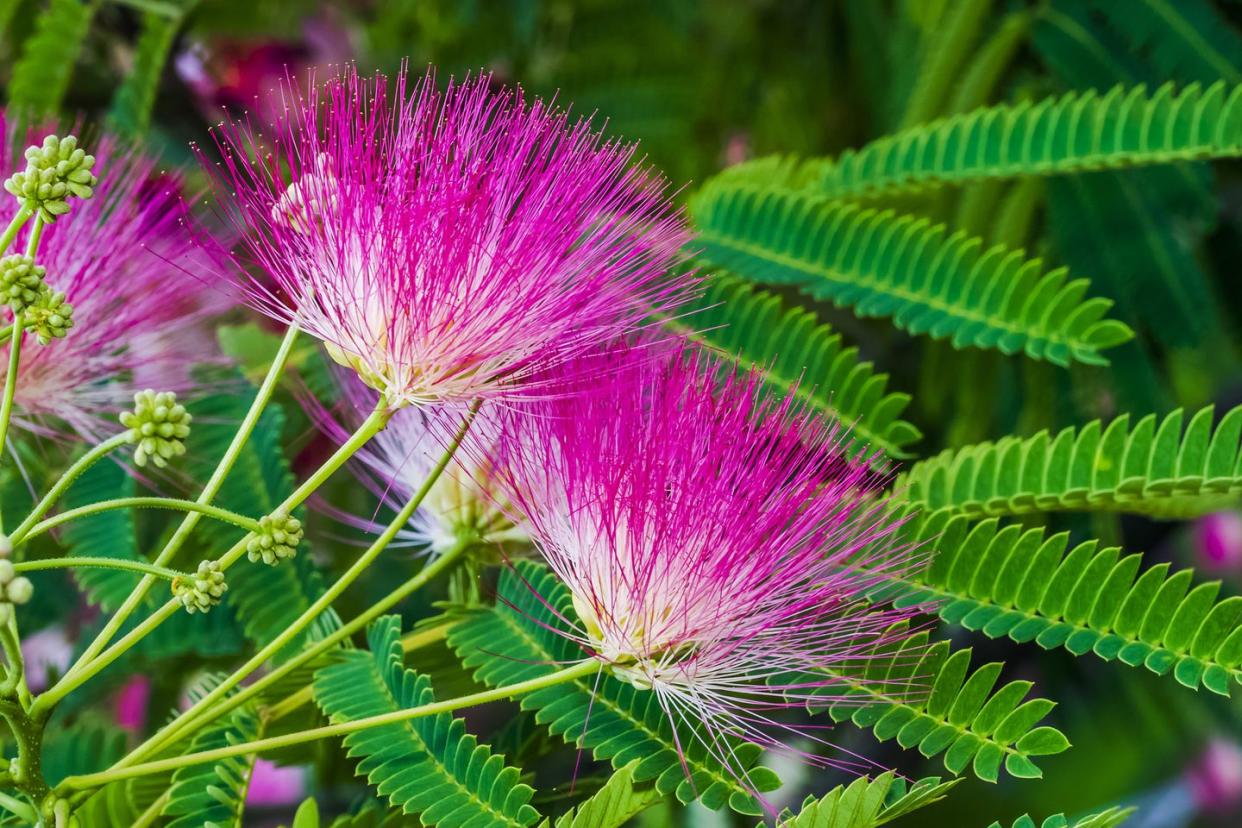
Water Hyacinth (Eichhornia crassipes)
Water hyacinth is technically a weed, but we think this is one of the prettiest ones out there. If you have a pond that you’d like to decorate, maybe skip this one because it's invasive and will soon cover the entire surface of the water. Those soft lavender-tinted blooms sure are lovely, though.
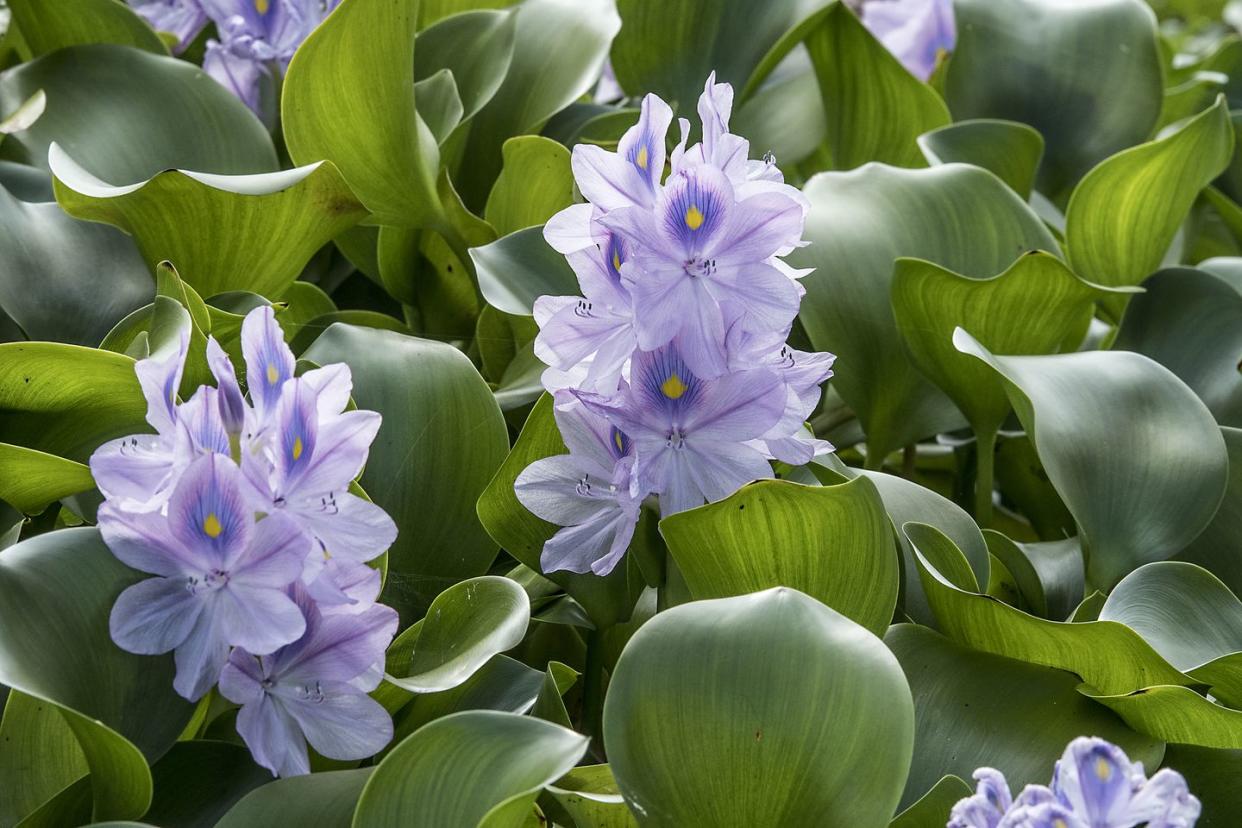
Ghost Orchid (Dendrophylax lindenii)
These elusive, elegant orchids dangle almost invisibly from their host trees, and they only bloom once a year (sometime in the summer, could be late spring—they're on nobody’s timeline but their own). If you want to see a rare ghost orchid in person, you'll have to go to a swamp. Even then, you'll only be allowed to see them through binoculars. It's absolutely worth it.
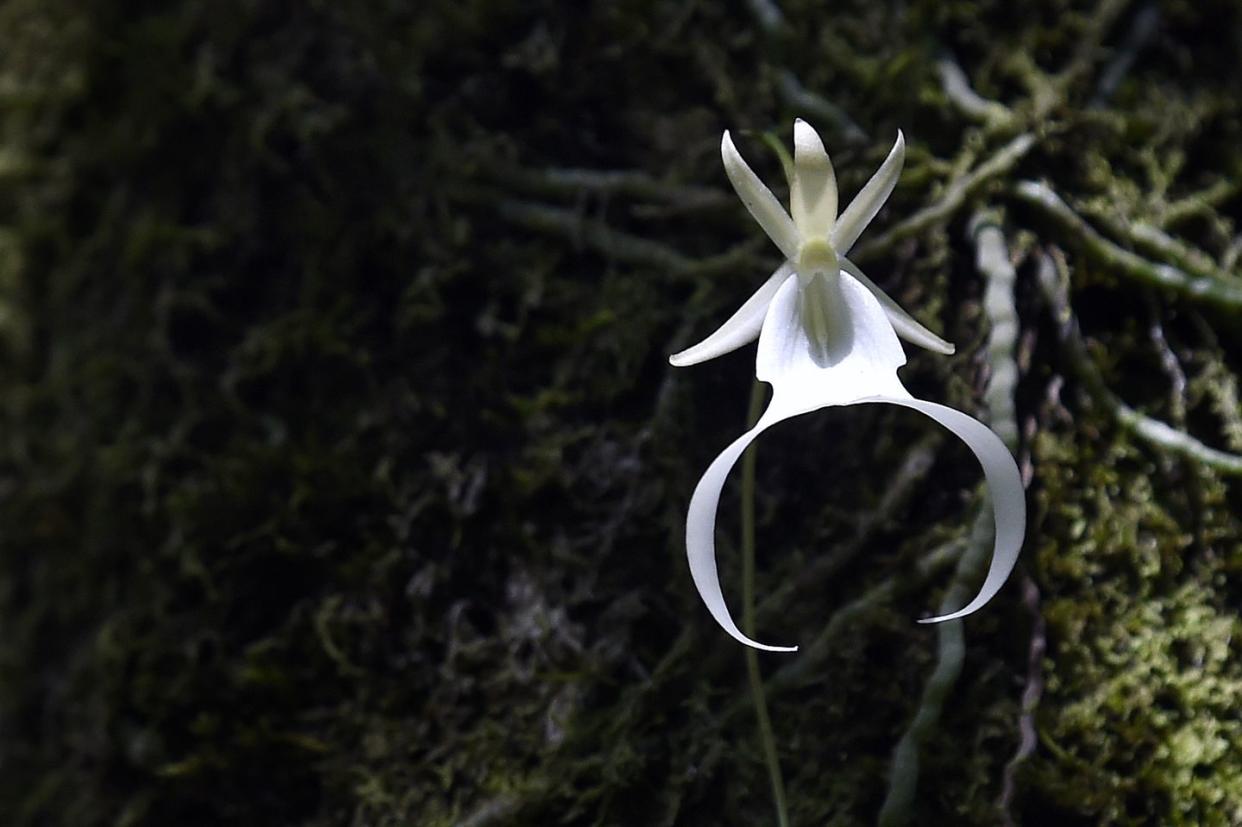
Peony (Paeonia lactiflora)
Peonies are a beautiful mess, and we love every minute of their short appearance every year. They grow long, thin stalks, and once the giant flowerhead blooms, they get top-heavy and flop over. The petals are compact and fold in wherever they can fit…until they all fall off in a rain shower. Still, they're perfect.
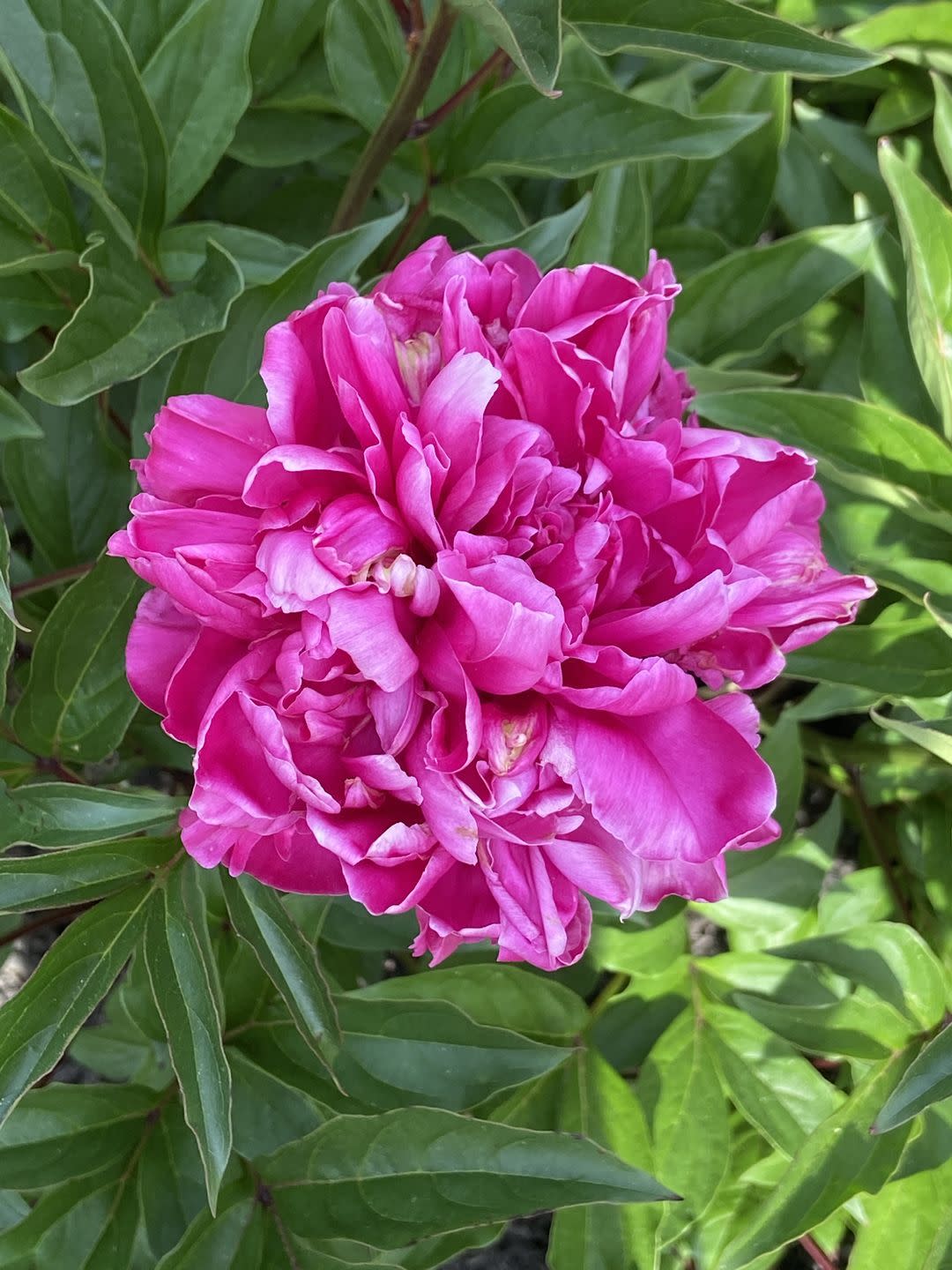
Wisteria (Wisteria frutescens)
Most flowers that grow on a vine are eventually considered invasive, but when you consider the huge, dangling, lavender-colored cluster flowers that wisteria produces, you take your chances. Sadly, they only bloom once a year—but what a show!
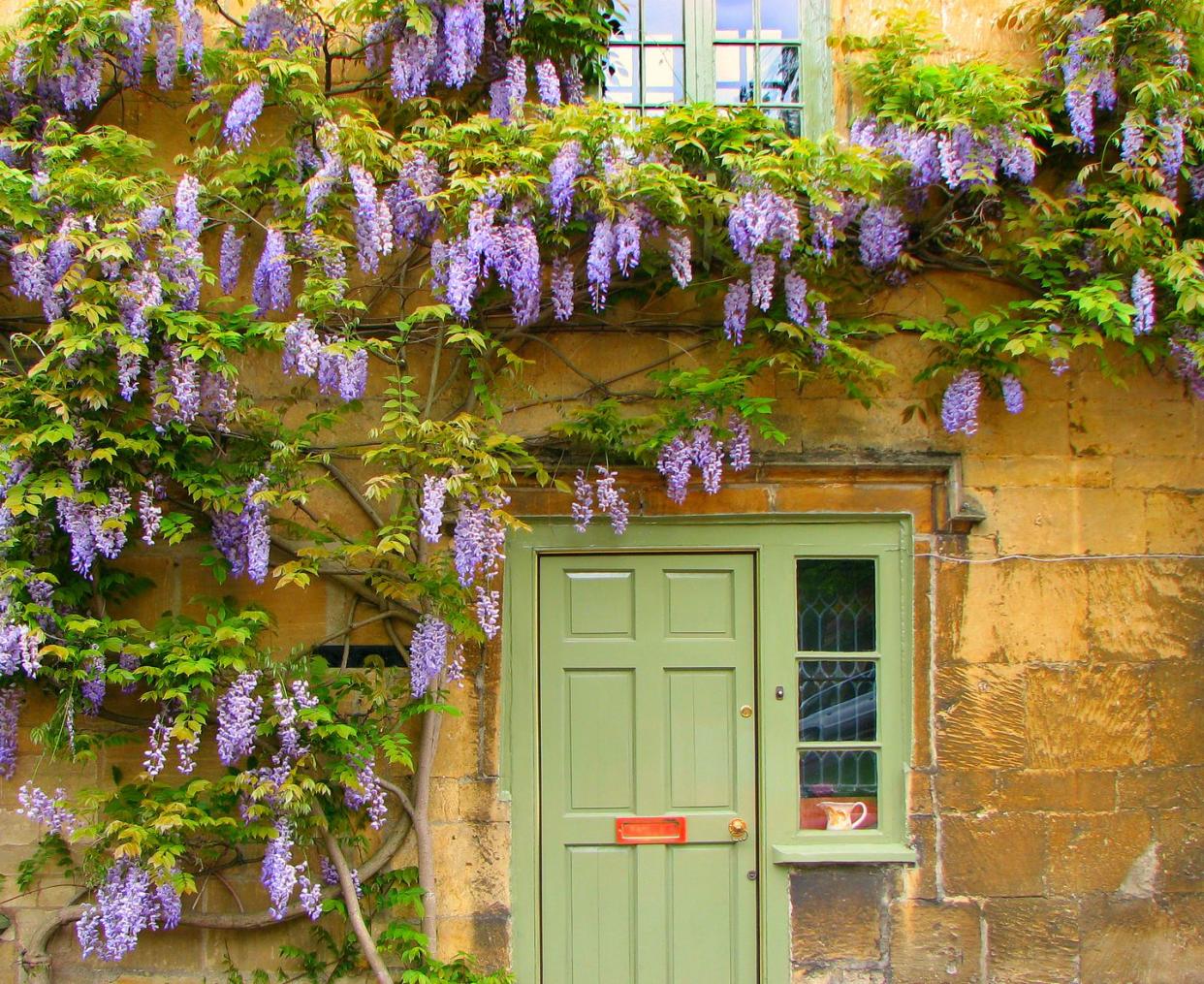
Jade Vine (Strongylodon macrobotrys)
You hardly ever see turquoise as a natural flower color, which is what makes the endangered jade vine a bucket-list sight for anthophiles. In its native home of the Philippines, it's called tayabak—and whether you think each flower looks like a claw or a butterfly, we can all agree that its colors are spectacular.
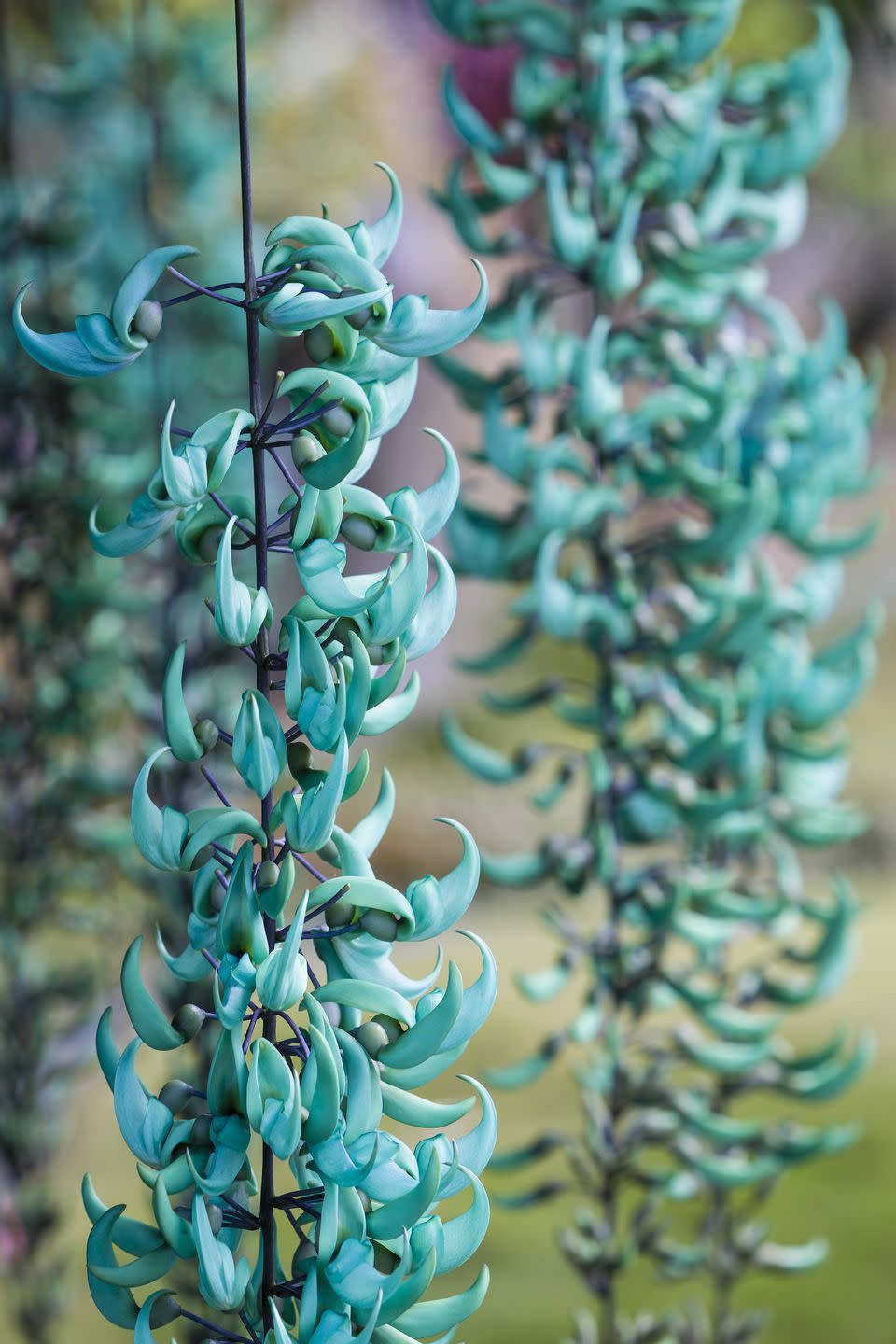
Okra (Abelmoschus esculentus)
In the world of flowering vegetables, few are lovelier. Let's take a long and adoring look at the delicate okra flower. It opens into a near-perfect circle with a spot of burgundy in its center. One day after blooming, it falls off, and in its place will grow a slimy green vegetable that many people claim to hate. That pale yellow flower, though….
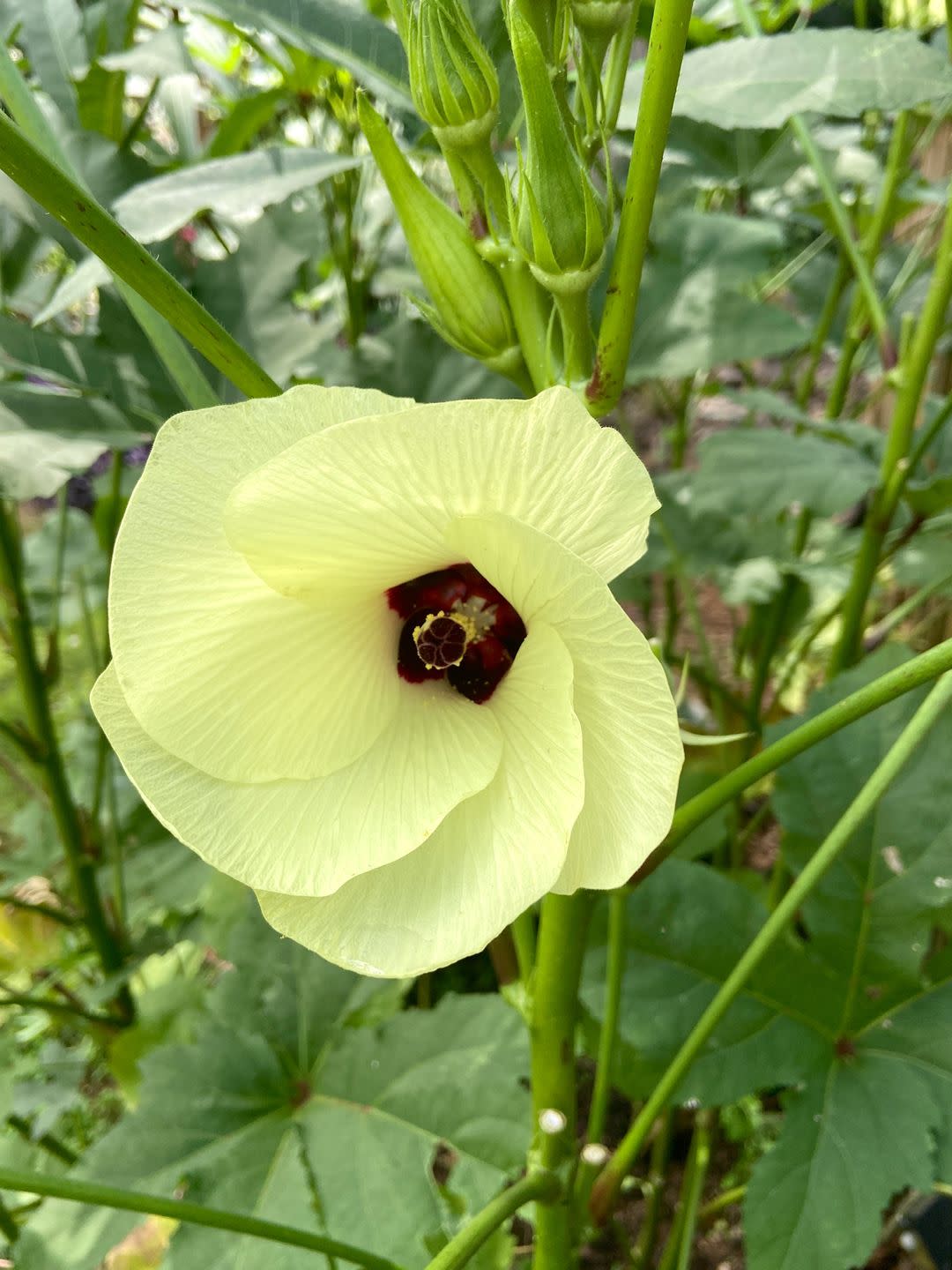
Saucer Magnolia Tree (Magnolia × soulangeana)
There aren't many flowers in the world that are larger than a plate, but the blossoms on this tree measure up. The creamy white-and-pink-striped petals lay back in a saucer shape and can reach as wide as 10 inches across. If you're tempted to take a bunch of selfies with a magnolia flower, you're not alone.
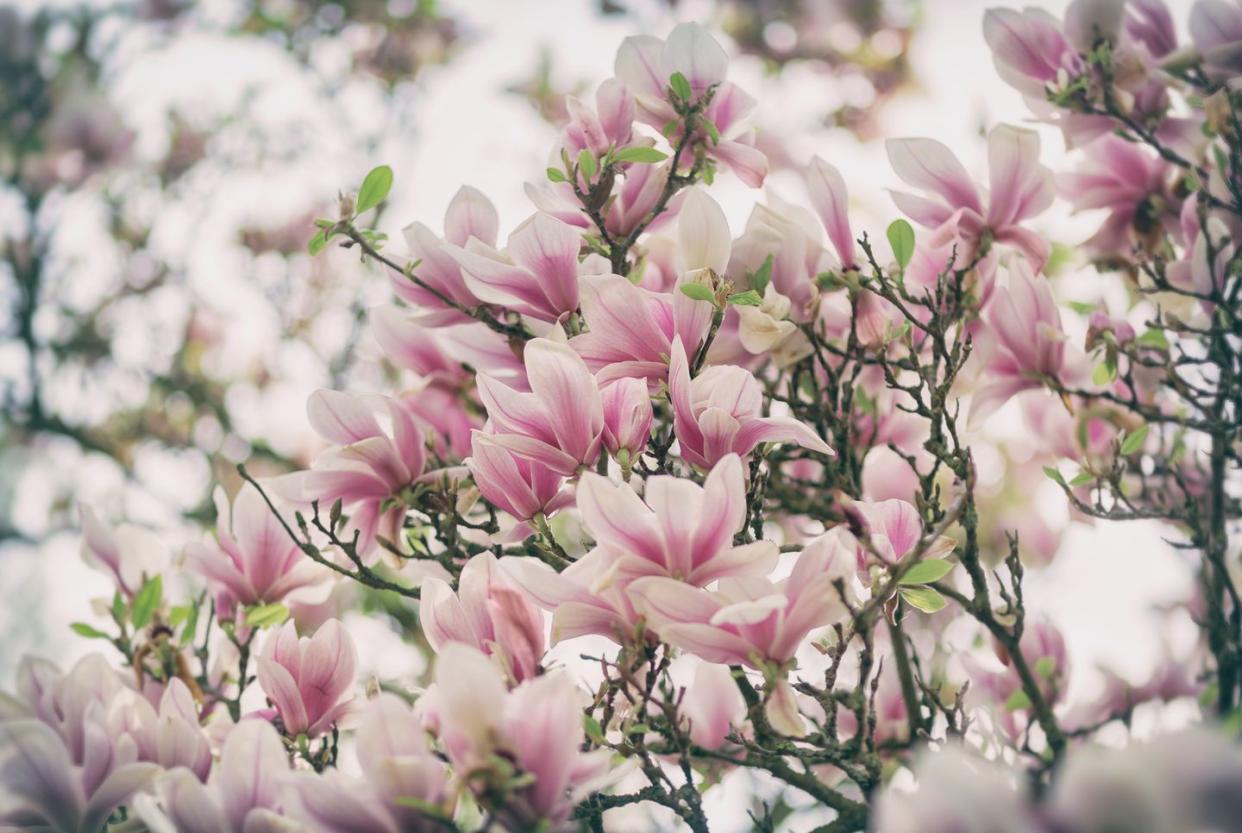
Pink Hibiscus (Hibiscus rosa-sinensis)
For a plant with enormous flowers, ranging from blazing tropical colors to beige, the hibiscus is a wonder. If you live near one, don't blink—each flower naturally only lasts a single day before falling to the ground. Thankfully, hibiscus shrubs or trees can send up blooms for months on end, especially in tropical climates.
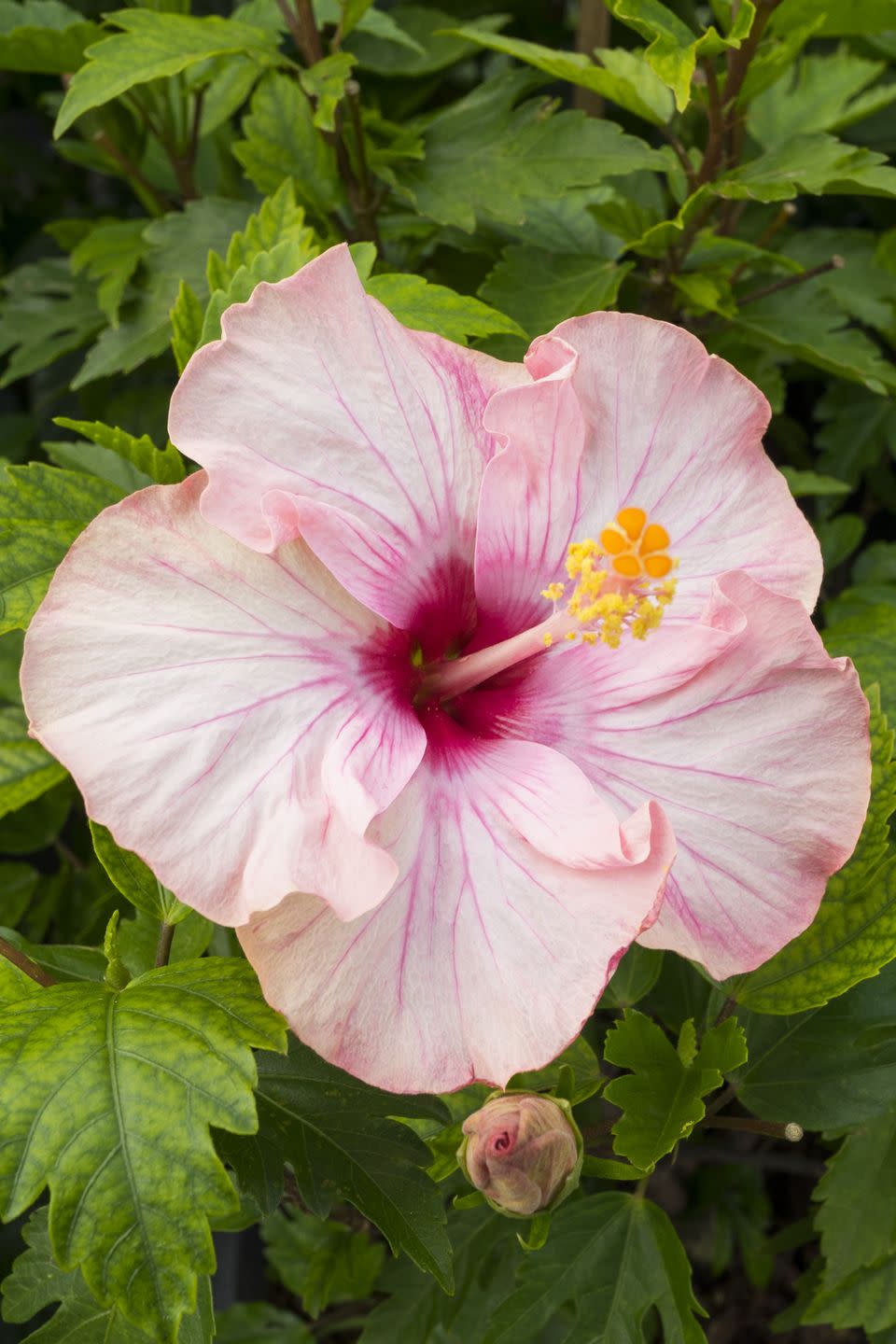
Hydrangea (Hydrangea macrophylla)
The hydrangea is so ancient, fossils of the plant from 65 million years ago have been identified—and it continues to be a candy-colored favorite today. The bushes are quite easy to grow, but what's really neat is that those giant blooms don't even have petals—they're leaves that just happen to turn periwinkle purple, bubblegum pink, and milky white.
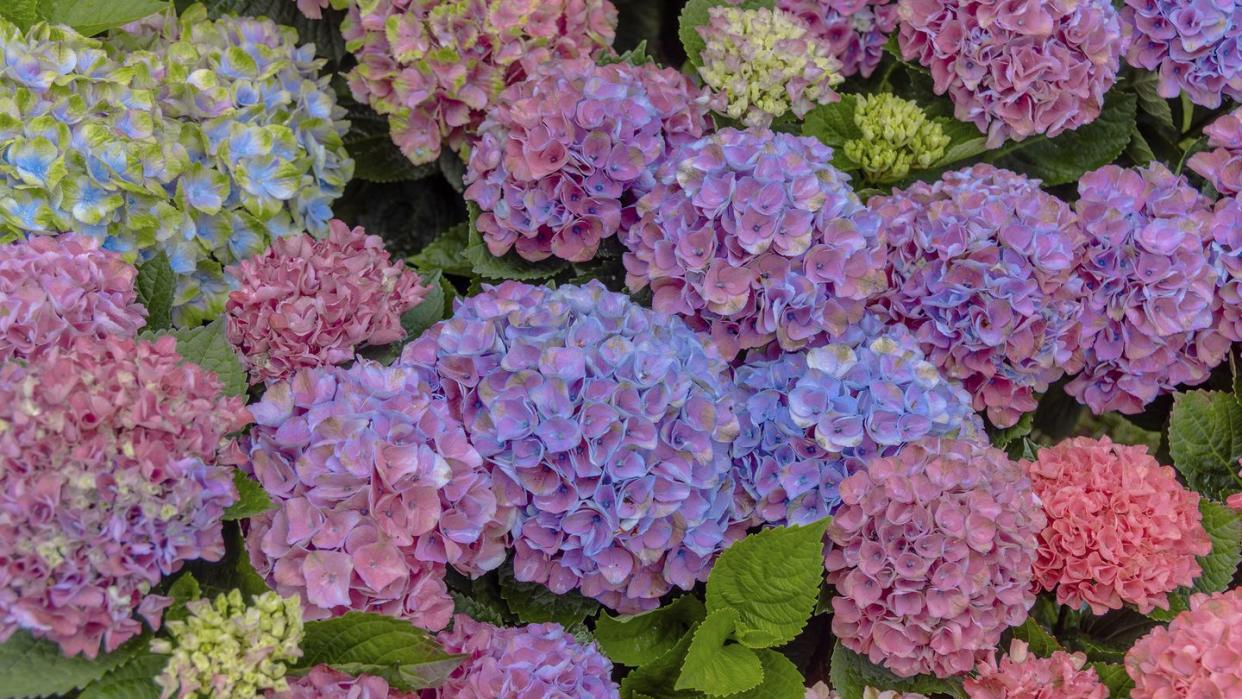
Chrysanthemum (Chrysanthemum morifolium)
A chrysanthemum starts out as a tightly-packed bulb, and when it blooms, it's just petals on petals on petals—each as vibrant as the next. No wonder there's a fireworks pattern named after them.
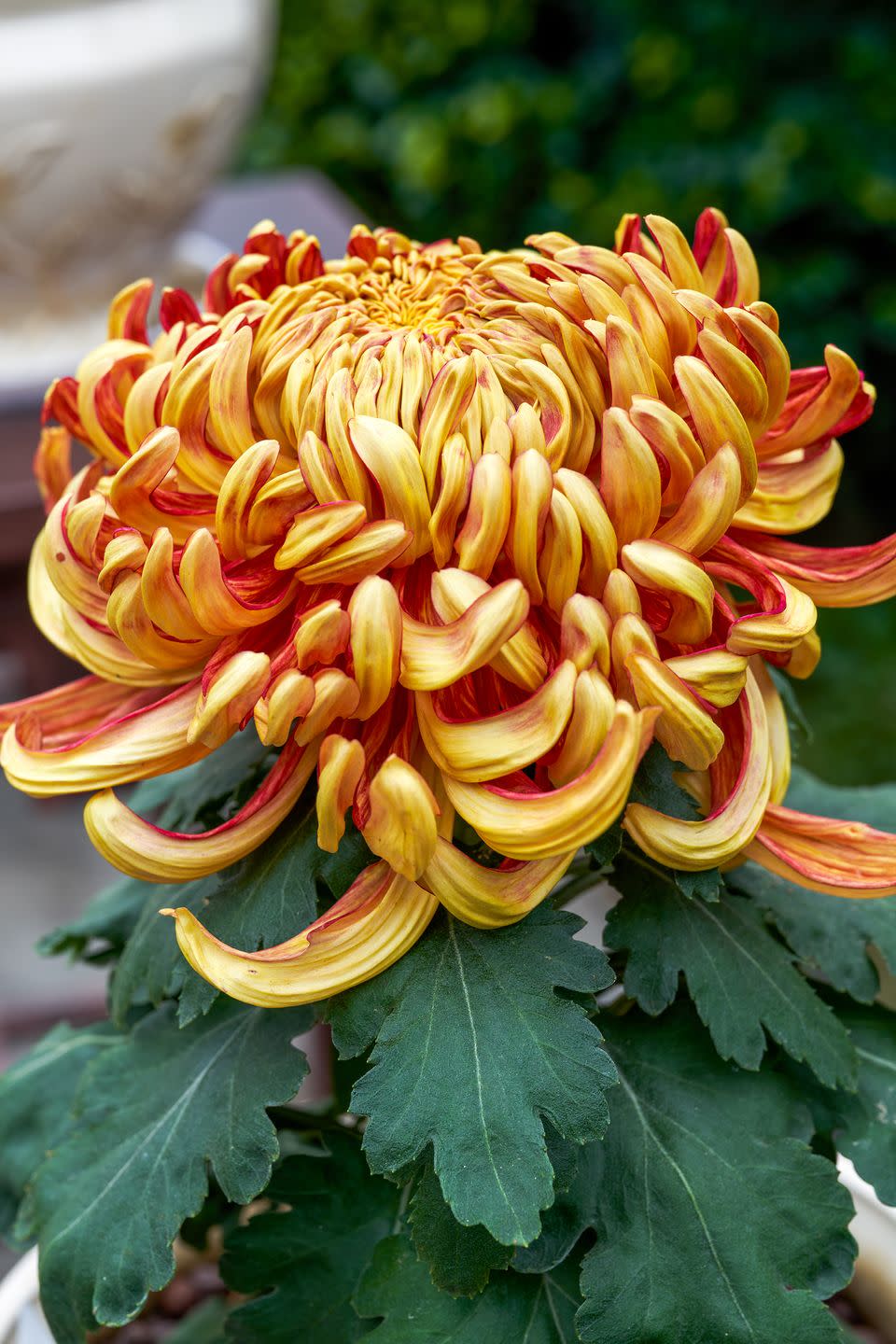
Bleeding Hearts (Lamprocapnos spectabilis)
According to lore, the origin story for the bleeding heart springs from the broken hearts of unrequited lovers. Give this dainty little flower a bit of shade and plenty of water, and it'll pop up in your garden year after year, reminding you to cherish the ones you love.
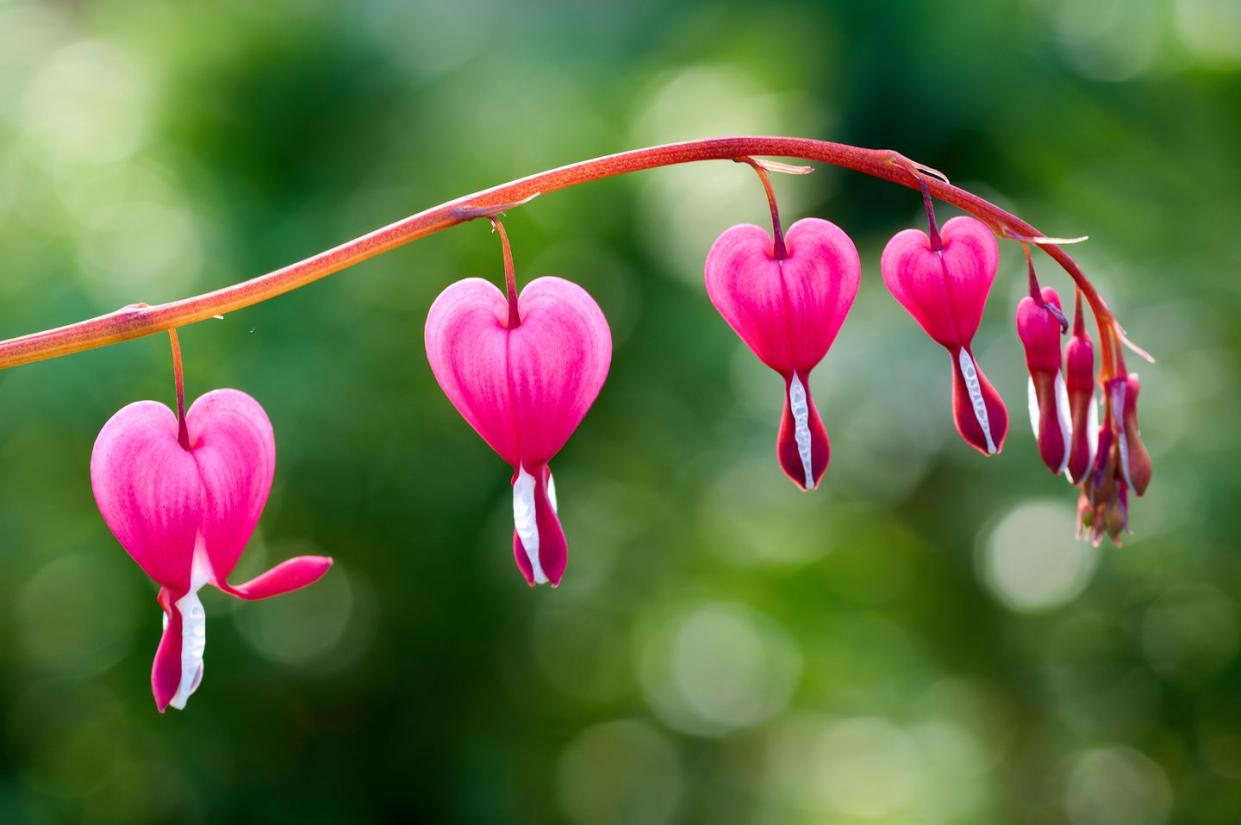
Giant Allium (Allium giganteum)
Someone needs to rename the giant allium The World’s Jolliest Onion, because clearly, these purple disco balls atop four-foot tall sticks are the life of the party. They're edible but really bitter, so it's probably best to use them as intended—the centerpiece for a Dr. Seuss–themed garden.
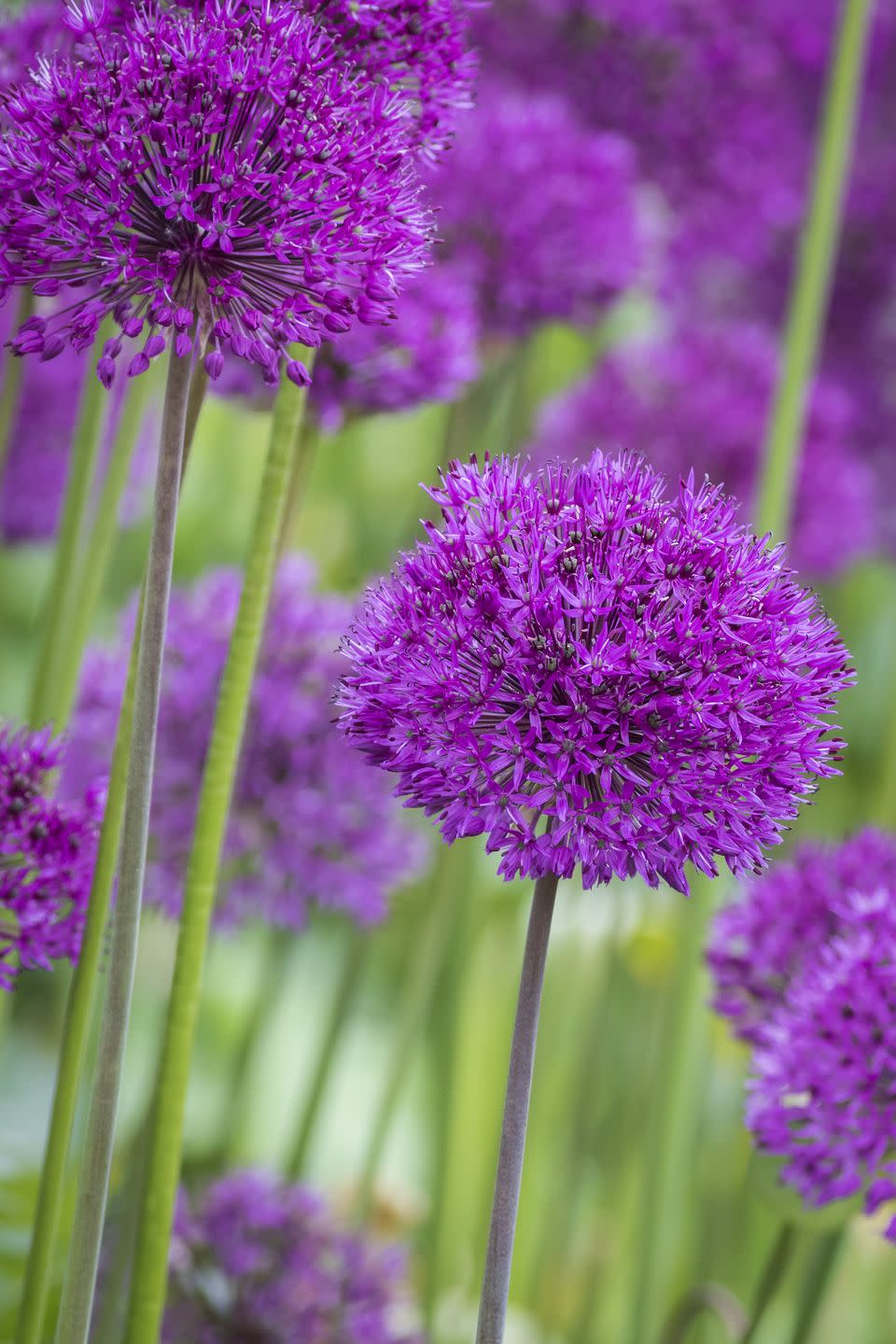
Shell Ginger (Alpinia zerumbet)
Before they bloom, each of these flower buds resembles a tiny, pearlescent, pink-tipped sea shell. Once they unfurl, a vibrant orange and red lily, about three inches long, remains on the vine. It's such a charming tropical flower to have around, and it smells really sweet. Even better, the leaves and flowers can be made into shell ginger tea.
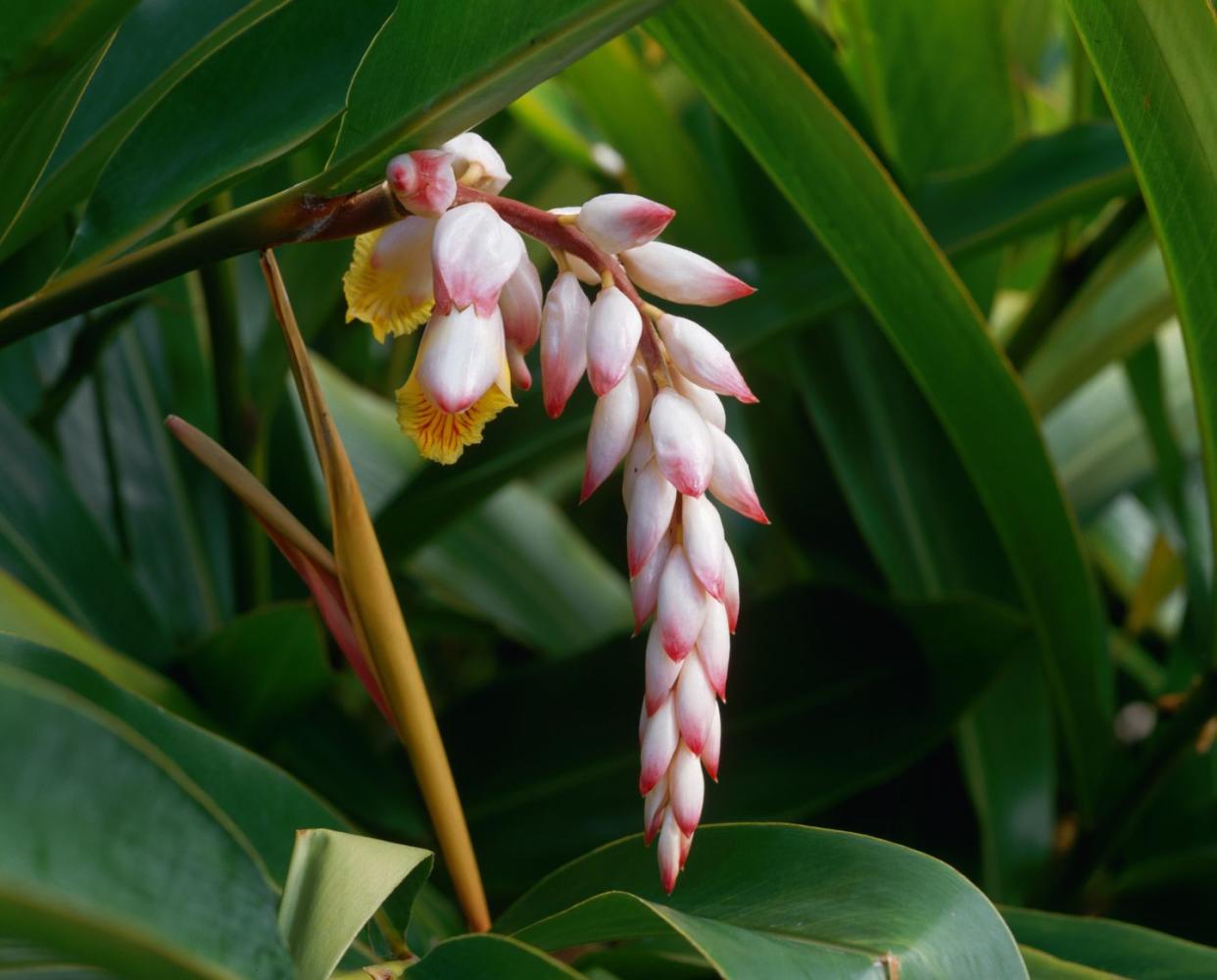
Petunia Black Velvet (Petunia x hybrida)
A potted black velvet petunia may have you rethinking the value of adding some dark décor to your garden. They're so very inky (and soft), that they're sure to stand out against your typical pinks and yellows.
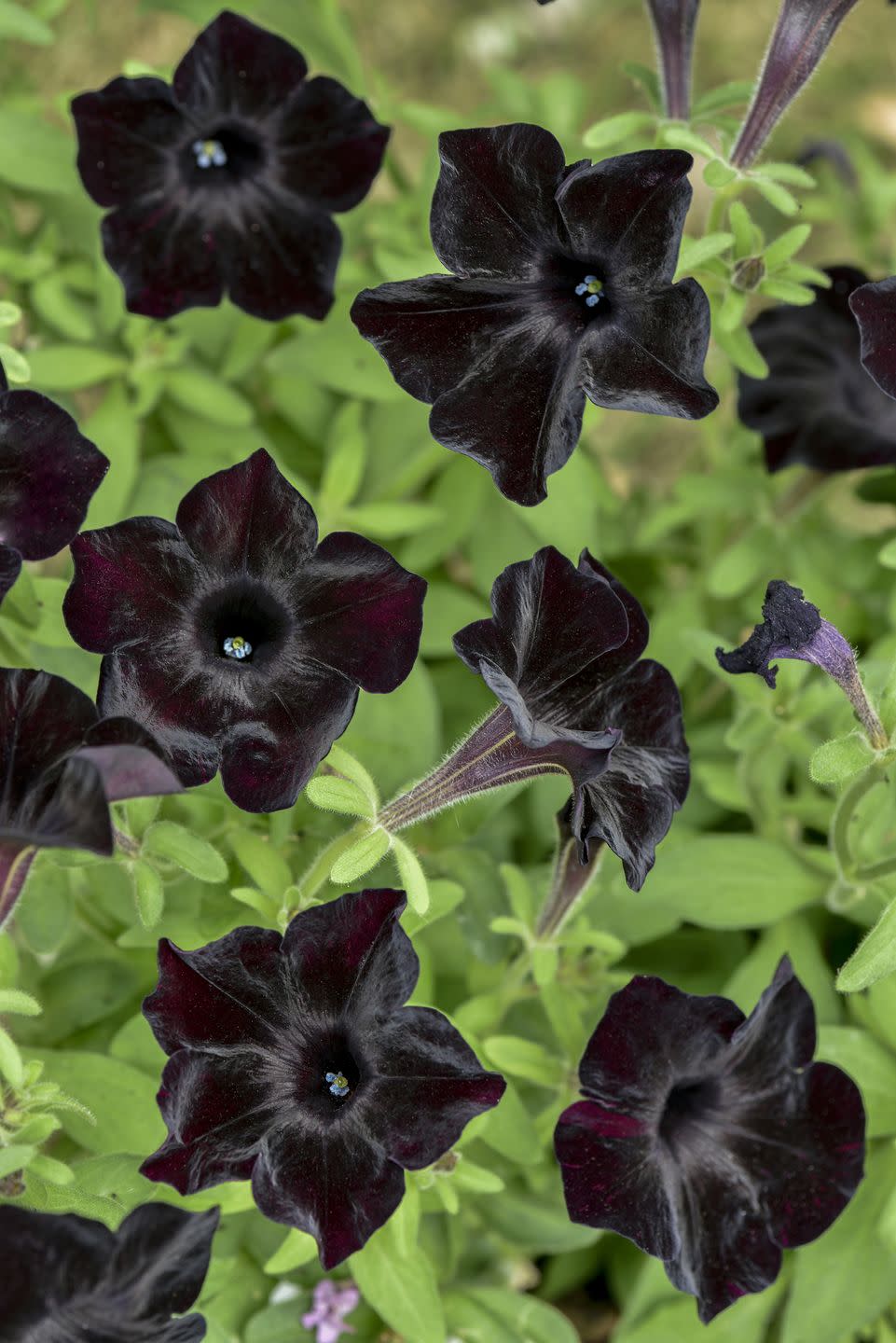
Daffodil (Narcissus)
Daffodils may be as common as clover, but the joy they bring after a long winter earns them a place on this list. Plus, daffodils are tough—a few unexpected snow days in March can't stop them from growing tall and showing off their cheerful, bright yellow flowers.
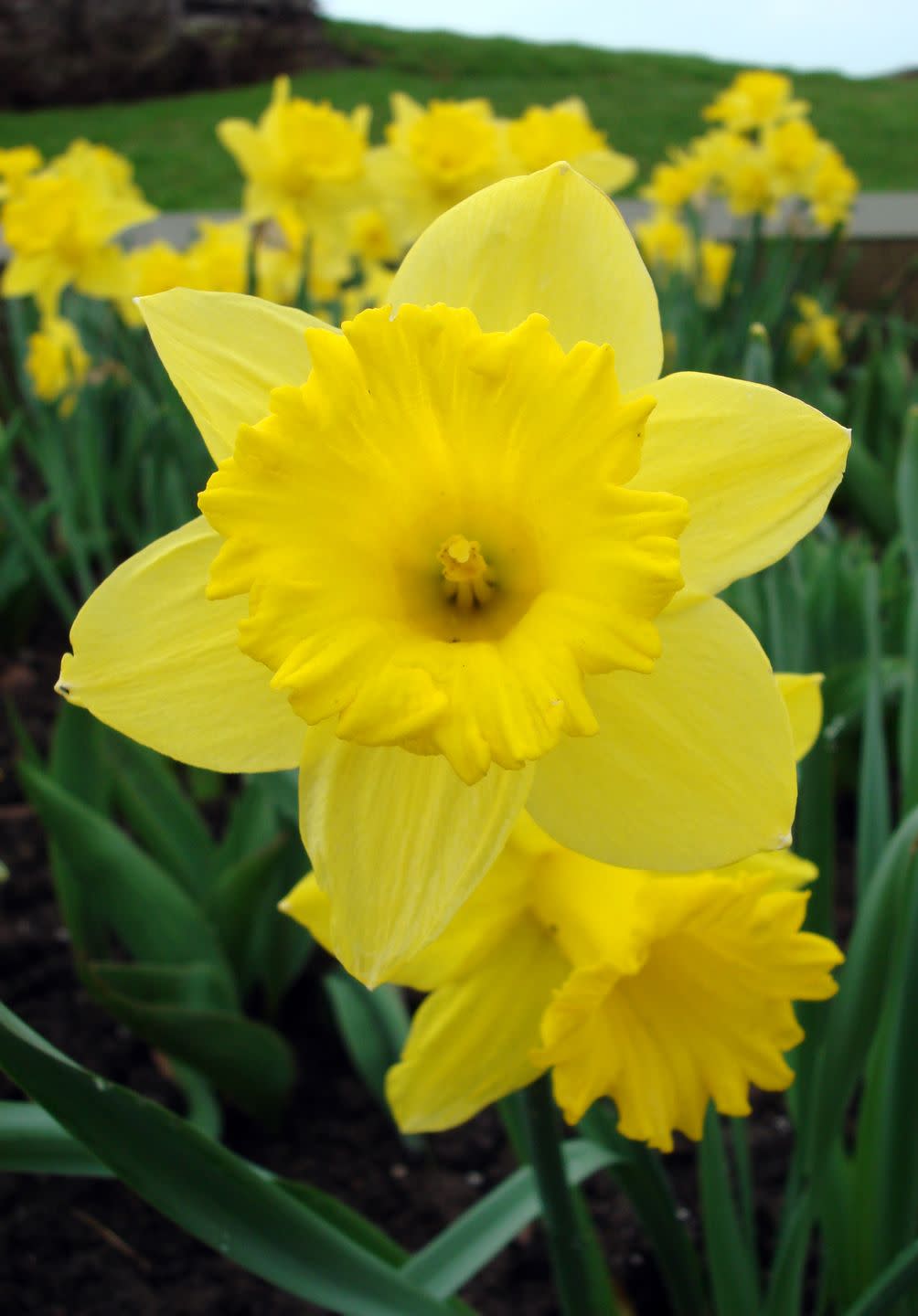
You Might Also Like
